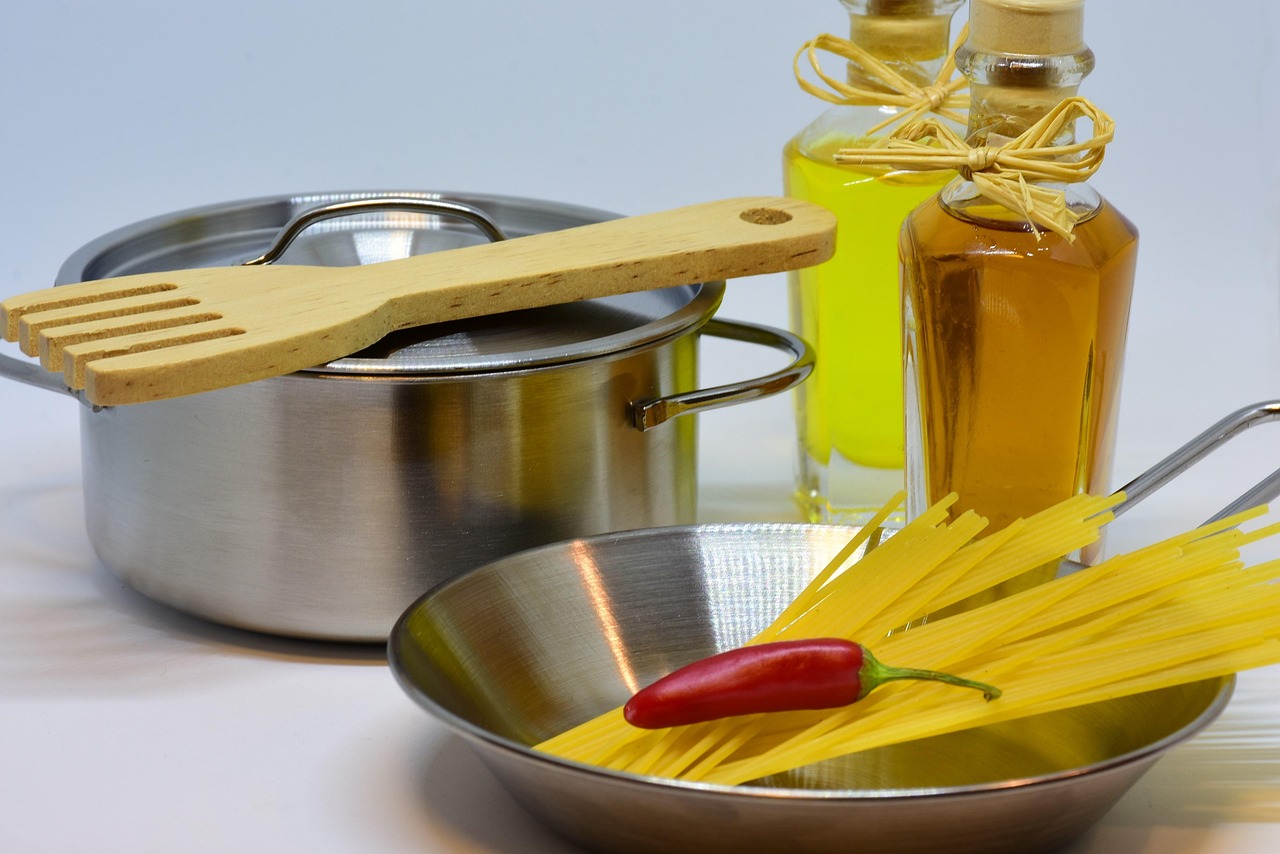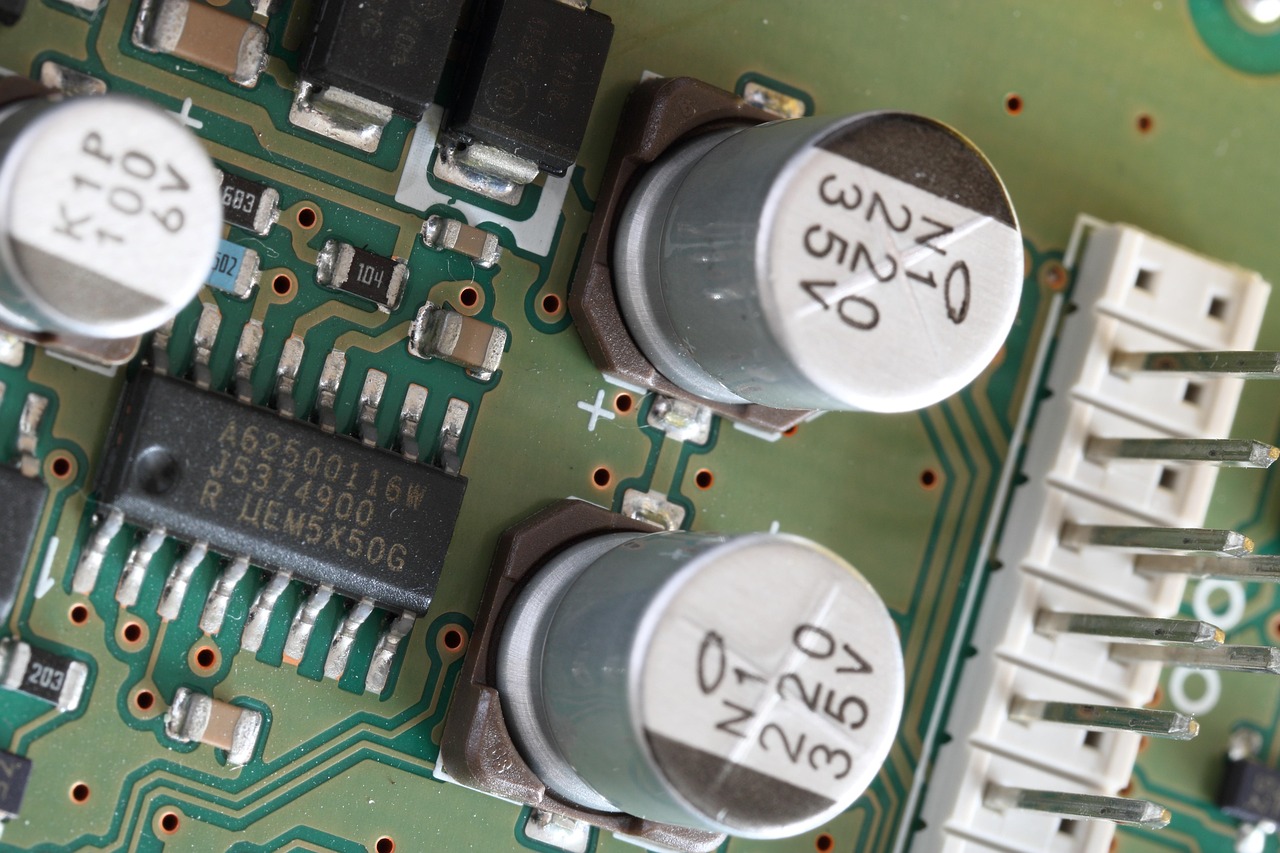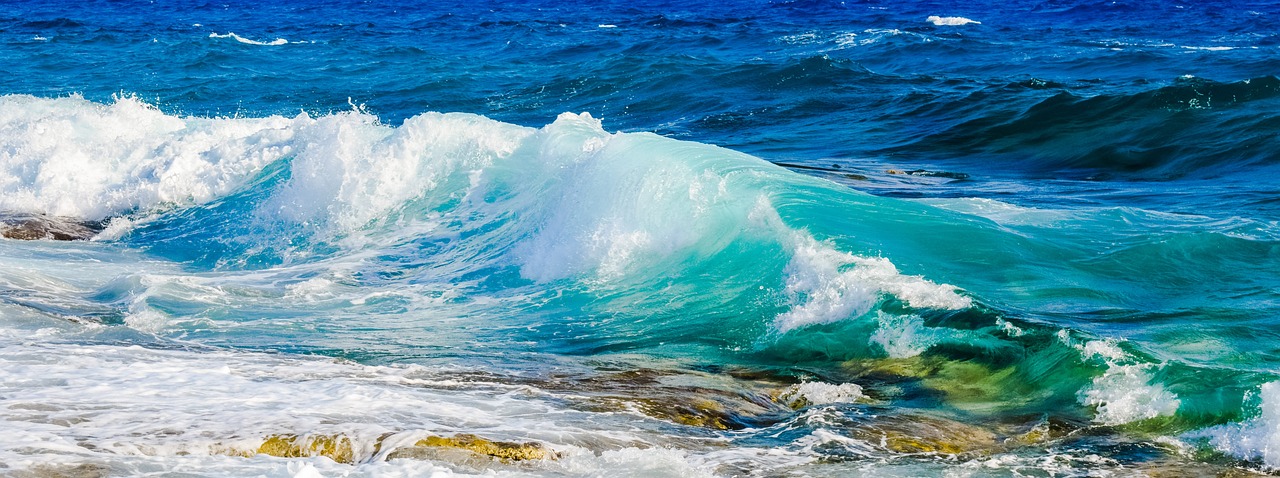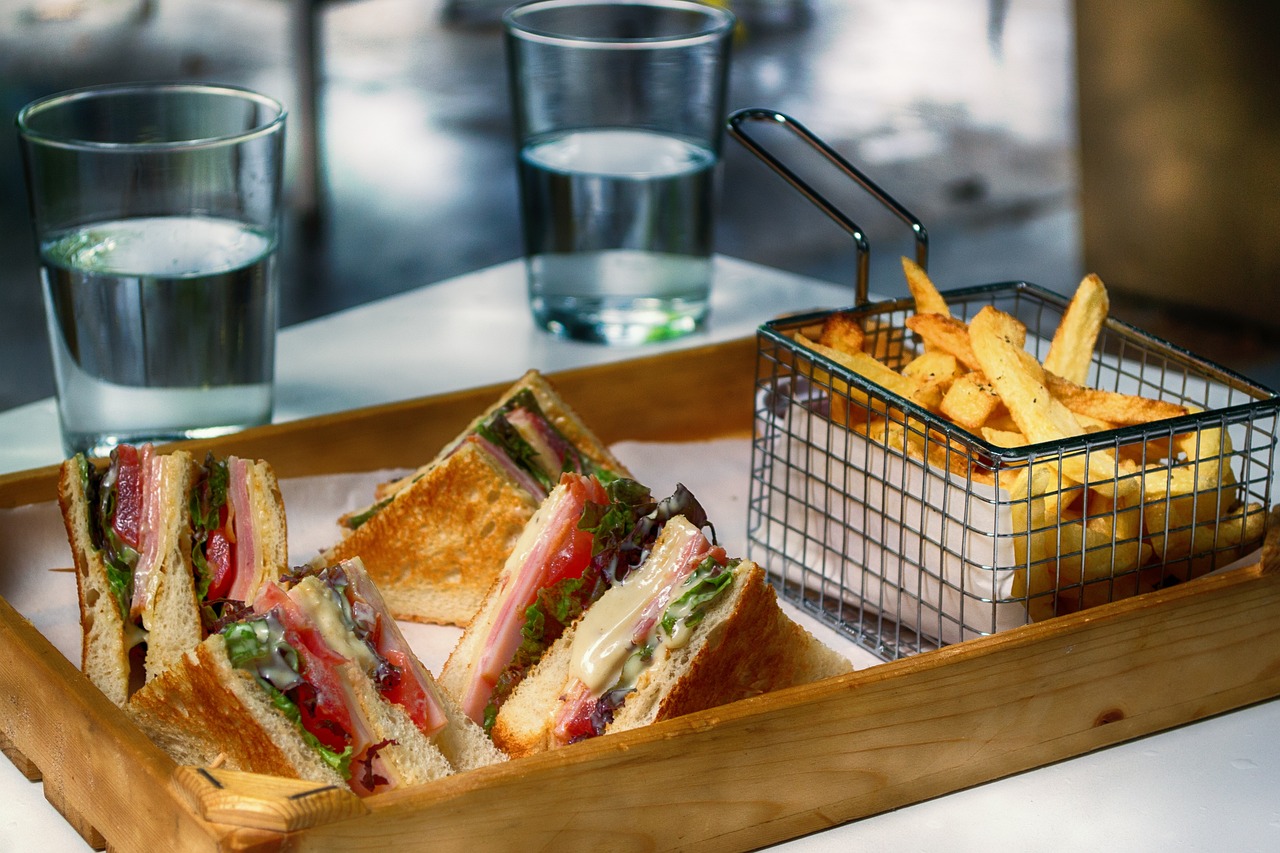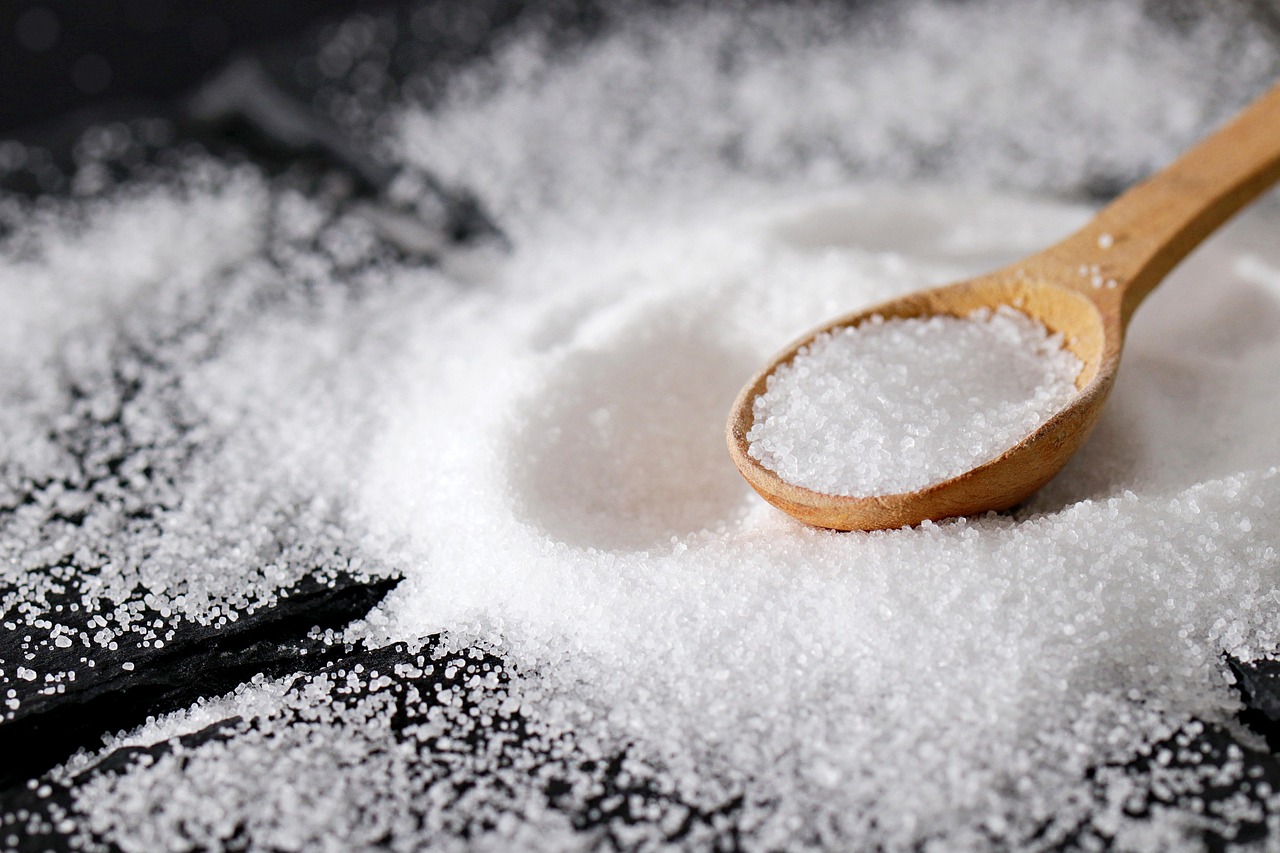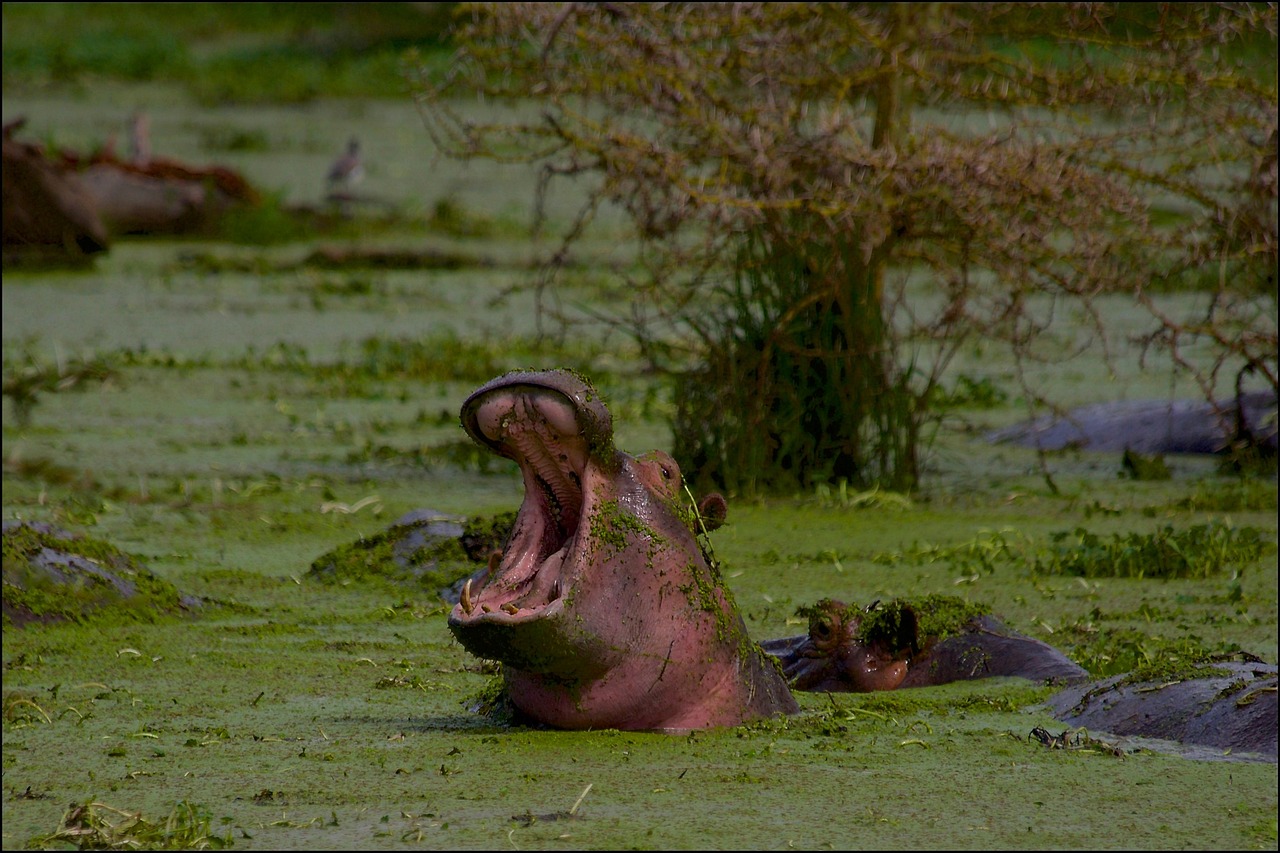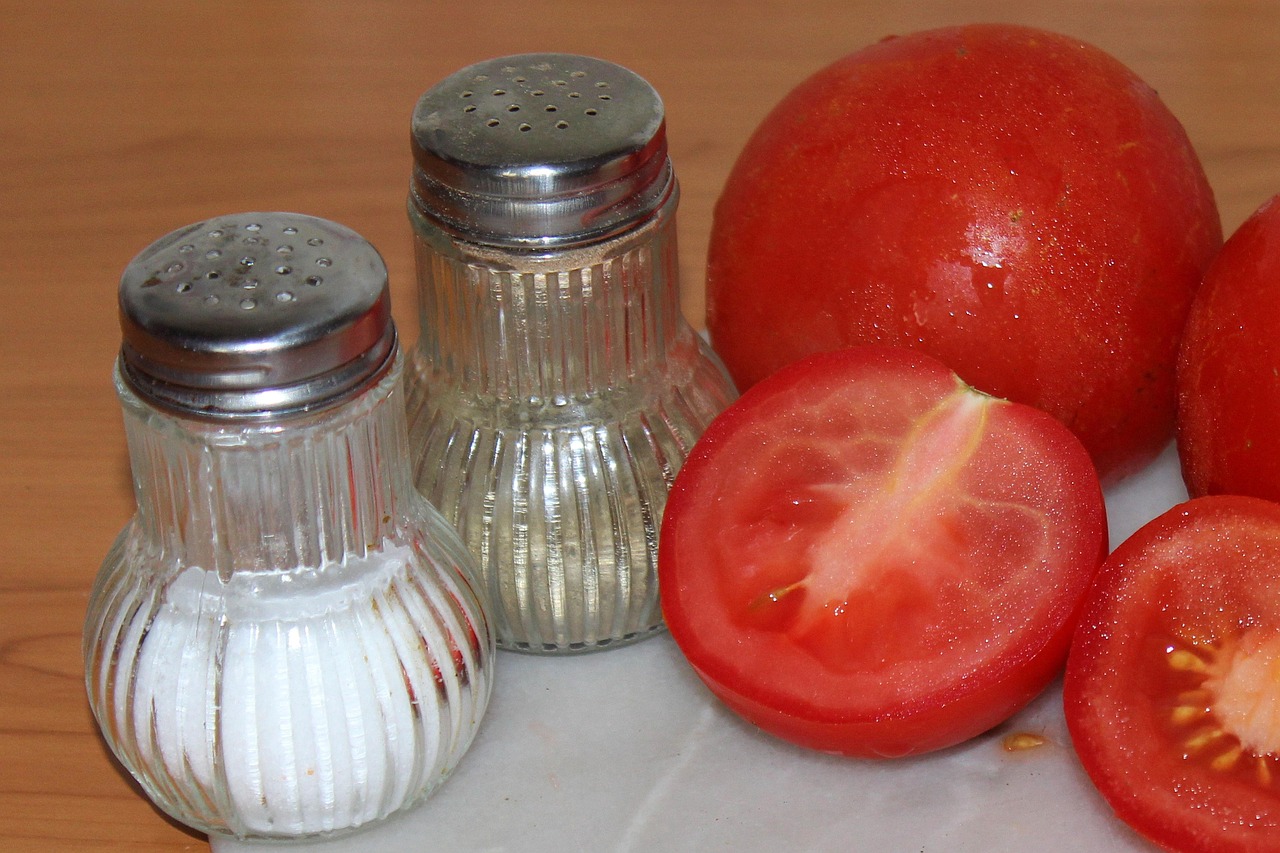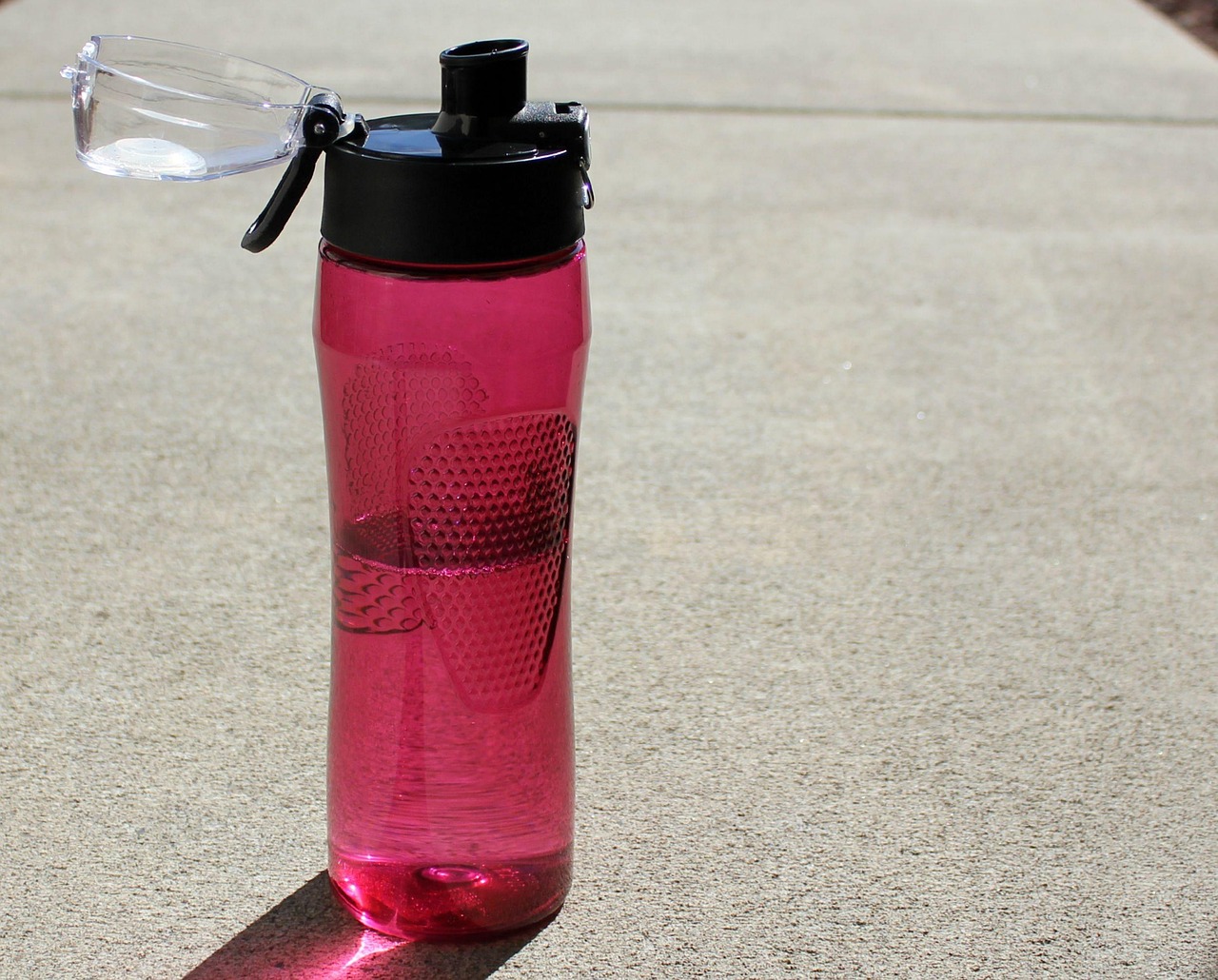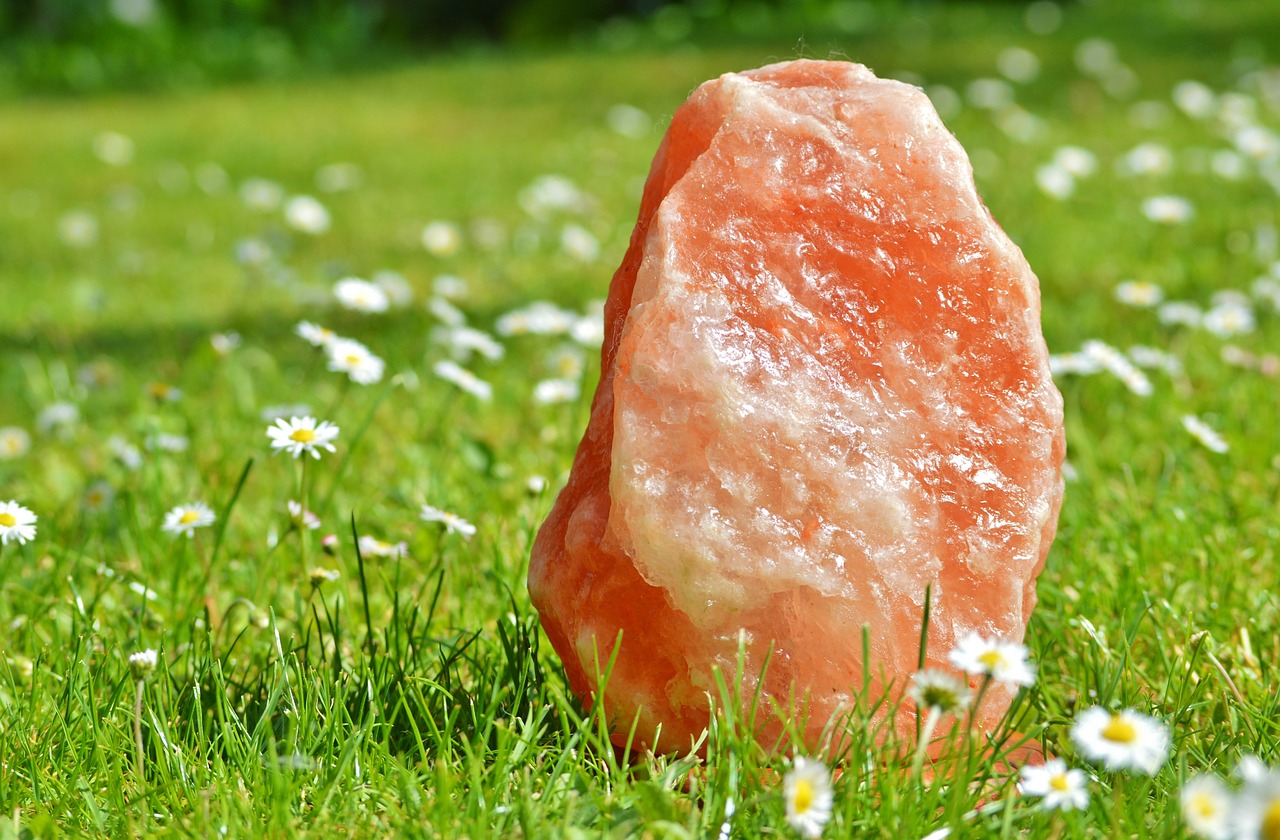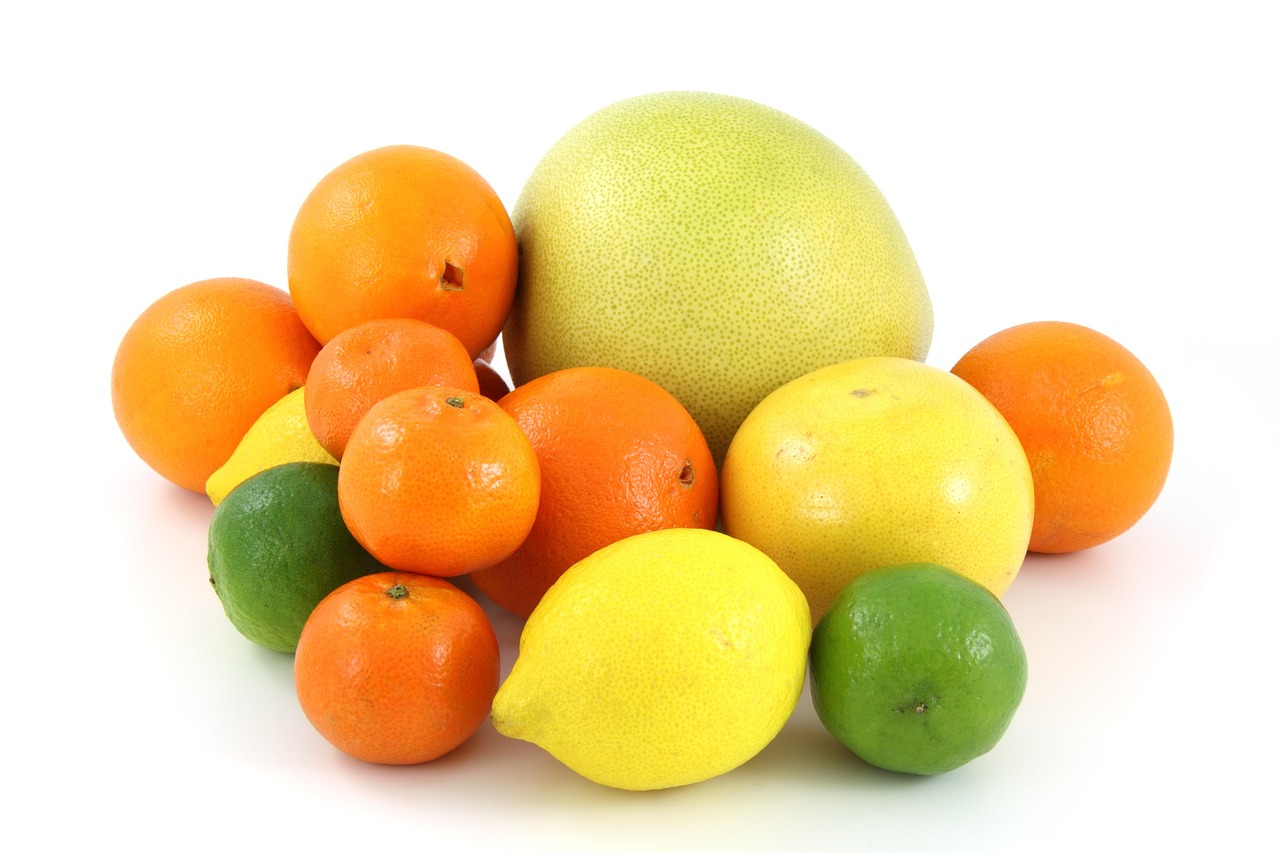The phenomenon known as the Mpemba Effect has intrigued scientists and curious minds alike for centuries. This counterintuitive observation suggests that, under specific conditions, hot water can freeze faster than cold water. The Mpemba Effect challenges our fundamental understanding of thermodynamics and invites exploration into the underlying scientific principles.
The Mpemba Effect is defined as the surprising occurrence where hot water freezes faster than its colder counterpart. This phenomenon has been a subject of debate and investigation, prompting scientists to delve into its complexities and the conditions that enable it to manifest.
The term “Mpemba Effect” is derived from a Tanzanian student, Erasto Mpemba, who first documented this curious effect in 1963. His observation, made during a school experiment, sparked interest and led to various scientific inquiries into this puzzling phenomenon.
Initial experiments conducted by Mpemba and others laid the groundwork for understanding the Mpemba Effect. These early observations prompted further systematic studies, as scientists sought to replicate and explain the results.
In his original experiment, Mpemba noted that a hot ice cream mixture froze faster than a cold one. This unexpected result led to a series of discussions and experiments aimed at validating the phenomenon.
Following Mpemba’s discoveries, researchers conducted numerous experiments, yielding mixed results. These studies highlighted the complexities of the Mpemba Effect, emphasizing its dependency on various factors such as environmental conditions and water purity.
Several hypotheses have emerged to explain why hot water might freeze faster than cold water. Understanding these theories is crucial for grasping the Mpemba Effect.
One significant factor contributing to the Mpemba Effect is evaporation. Hot water can lose mass through evaporation, which may lead to a quicker freezing rate compared to cold water. This loss of mass reduces the volume that needs to freeze, potentially accelerating the process.
In hot water, convection currents play a pivotal role in facilitating uniform cooling. These currents help distribute heat evenly throughout the liquid, which can impact the freezing process and contribute to the Mpemba Effect.
Supercooling occurs when water cools below its freezing point without solidifying. This phenomenon might play a role in the Mpemba Effect, as hot water may be less likely to supercool, allowing it to freeze more readily than cold water.
Numerous experiments have attempted to replicate the Mpemba Effect, resulting in both supportive and contradictory findings. This section reviews significant studies that provide evidence for or against the phenomenon.
Several notable research studies have successfully demonstrated the Mpemba Effect, showcasing the specific conditions under which it occurs. These studies provide valuable insights into the mechanisms behind this intriguing phenomenon.
Despite some successful experiments, many have struggled to replicate the Mpemba Effect consistently. Factors such as experimental setup, water impurities, and environmental conditions contribute to the challenges researchers face in obtaining reliable results.
Understanding the Mpemba Effect can have practical applications across various fields, including climate science, food technology, and engineering. Exploring its potential implications can lead to innovative solutions and advancements.
The Mpemba Effect may provide insights into ice formation in natural environments and contribute to climate modeling. Understanding this phenomenon can aid researchers in predicting how ice behaves under varying temperatures.
In the food industry, harnessing the Mpemba Effect could enhance freezing techniques, potentially improving preservation methods. This could lead to better quality food products and more efficient freezing processes.
In summary, the Mpemba Effect remains a captivating topic in science, with ongoing research aimed at unraveling its complexities. The interplay of various factors continues to challenge our understanding, making it a fascinating area for future exploration.
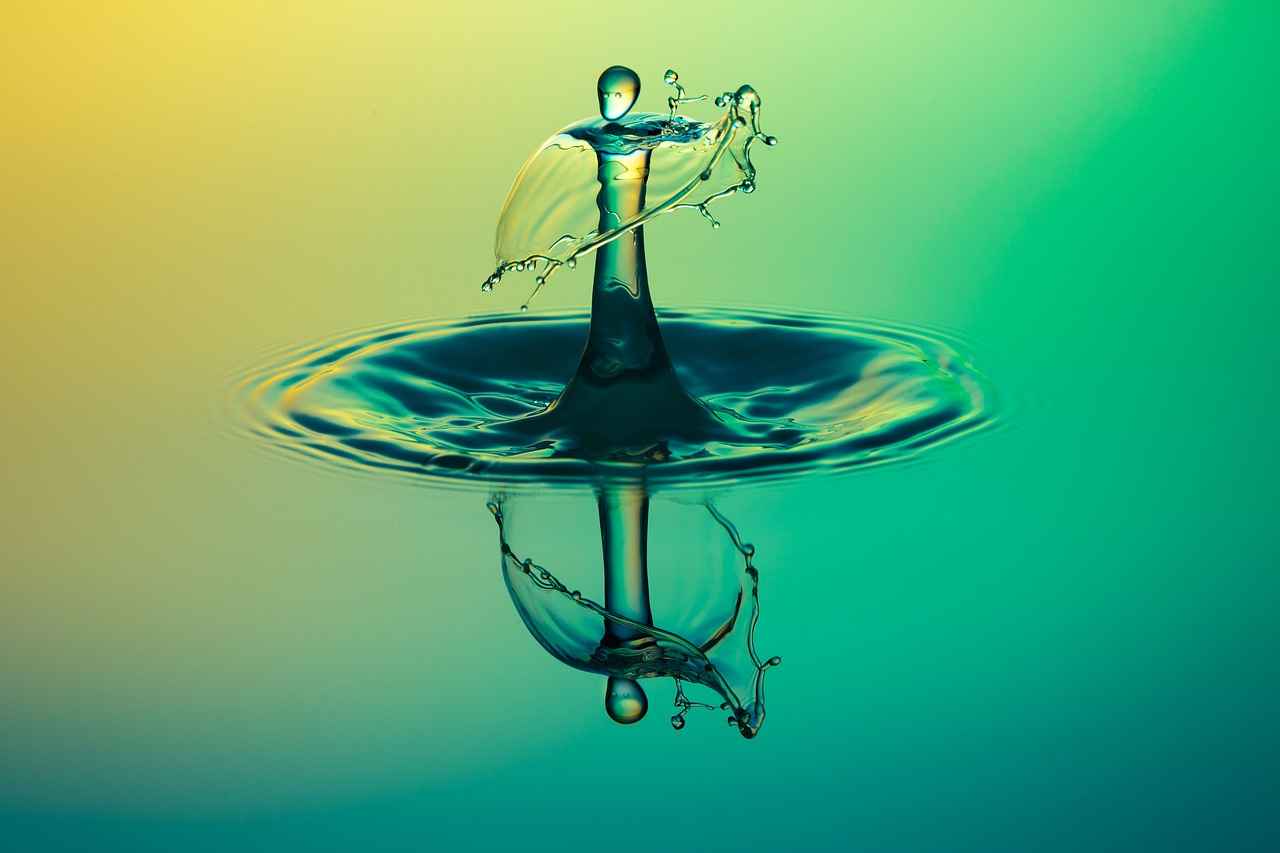
What is the Mpemba Effect?
The Mpemba Effect is a captivating phenomenon that challenges our conventional understanding of thermodynamics. It refers to the counterintuitive observation that, under certain conditions, hot water can freeze faster than cold water. This curious behavior has intrigued scientists and laypeople alike for decades, prompting extensive research and debate.
Initially documented by a Tanzanian student named Erasto Mpemba in 1963, the effect has sparked numerous inquiries into its underlying mechanisms. Mpemba’s observation arose when he noticed that a hot ice cream mixture froze more quickly than a cold one, leading him to question the established norms of cooling and freezing processes.
Despite its seemingly straightforward premise, the Mpemba Effect is influenced by a variety of factors, making it a complex subject of study. The conditions under which this effect occurs can vary significantly, including the initial temperatures of the water, the surrounding environment, and even the properties of the containers used for freezing.
The origins of the Mpemba Effect can be traced back to ancient observations, but it was not until the 20th century that scientific interest began to formalize. Early experiments documented the effect, leading to a surge of curiosity among researchers. These initial inquiries laid the groundwork for systematic studies aimed at understanding the phenomenon.
Several hypotheses have emerged to explain why hot water might freeze faster than cold water. Among these, evaporation plays a crucial role. Hot water can lose mass through evaporation, which reduces the volume that needs to freeze, potentially leading to quicker freezing times.
- Convection Currents: In hot water, convection currents can promote more uniform cooling. These currents help distribute temperature evenly throughout the liquid, which can enhance the freezing process.
- Supercooling: Another theory is related to the supercooling phenomenon, where water cools below its freezing point without solidifying. This state can create conditions that favor the rapid formation of ice crystals when freezing does occur.
Numerous experiments have attempted to replicate the Mpemba Effect, yielding mixed results. While some studies have successfully demonstrated the phenomenon, many others have struggled to achieve consistent outcomes. This inconsistency highlights the challenges researchers face in isolating the variables that influence the Mpemba Effect.
The implications of the Mpemba Effect extend beyond theoretical curiosity. Understanding this phenomenon can have practical applications in various fields:
- Climate Science: Insights into the Mpemba Effect may improve our understanding of ice formation, which is crucial for climate modeling and predicting environmental changes.
- Food Technology: In the food industry, leveraging the Mpemba Effect could enhance freezing techniques, leading to better preservation methods for perishable goods.
In summary, the Mpemba Effect remains a subject of intrigue and investigation. Despite advancements in research, many questions linger regarding the precise mechanisms at play. Continued exploration is essential to unravel the complexities of this fascinating phenomenon, which challenges our understanding of the physical world.

The History of the Mpemba Effect
The Mpemba Effect is a captivating phenomenon that has intrigued scientists and curious minds alike. To truly appreciate its significance, it is essential to explore the history behind this remarkable observation, which dates back several decades.
The term Mpemba Effect originated from a Tanzanian student named Erasto Mpemba. In 1963, while studying at a secondary school, Mpemba noticed something unusual: when making ice cream, he found that hot mixtures froze faster than cold ones. This unexpected result sparked his curiosity and led him to conduct further investigations, ultimately sharing his findings with his teachers and peers.
Initially, Mpemba’s claims were met with skepticism. Many dismissed his observations as mere coincidence or attributed them to experimental errors. However, the persistence of his inquiry caught the attention of prominent scientists, including physicist Denis G. H. E. M. K. K. A. M. G. M. M. M. M. M. M. M. M. M. M. M. M. M. M. M. M. M. M. M. M. M. M. M. M. M. M. M. M. M. M. M. M. M. M. M. M. M. M. M. M. M. M. M. M. M. M. M. M. M. M. M. M. M. M. M. M. M. M. M. M. M. M. M. M. M. M. M. M. M. M. M. M. M. M. M. M. M. M. M. M. M. M. M. M. M. M. M. M. M. M. M. M. M. M. M. M. M. M. M. M. M. M. M. M. M. M. M. M. M. M. M. M. M. M. M. M. M. M. M. M. M. M. M. M. M. M. M. M. M. M. M. M. M. M. M. M. M. M. M. M. M. M. M. M. M. M. M. M. M. M. M. M. M. M. M. M. M. M. M. M. M. M. M. M. M. M. M. M. M. M. M. M. M. M. M. M. M. M. M. M. M. M. M. M. M. M. M. M. M. M. M. M. M. M. M. M. M. M. M. M. M. M. M. M. M. M. M. M. M. M. M. M. M. M. M. M. M. M. M. M. M. M. M. M. M. M. M. M. M. M. M. M. M. M. M. M. M. M. M. M. M. M. M. M. M. M. M. M. M. M. M. M. M. M. M. M. M. M. M. M. M. M. M. M. M. M. M. M. M. M. M. M. M. M. M. M. M. M. M. M. M. M. M. M. M. M. M. M. M. M. M. M. M. M. M. M. M. M. M. M. M. M. M. M. M. M. M. M. M. M. M. M. M. M. M. M. M. M. M. M. M. M. M. M. M. M. M. M. M. M. M. M. M. M. M. M. M. M. M. M. M. M. M. M. M. M. M. M. M. M. M. M. M. M. M. M. M. M. M. M. M. M. M. M. M. M. M. M. M. M. M. M. M. M. M. M. M. M. M. M. M. M. M. M. M. M. M. M. M. M. M. M. M. M. M. M. M. M. M. M. M. M. M. M. M. M. M. M. M. M. M. M. M. M. M. M. M. M. M. M. M. M. M. M. M. M. M. M. M. M. M. M. M. M. M. M. M. M. M. M. M. M. M. M. M. M. M. M. M. M. M. M. M. M. M. M. M. M. M. M. M. M. M. M. M. M. M. M. M. M. M. M. M. M. M. M. M. M. M. M. M. M. M. M. M. M. M. M. M. M. M. M. M. M. M. M. M. M. M. M. M. M. M. M. M. M. M. M. M. M. M. M. M. M. M. M. M. M. M. M. M. M. M. M. M. M. M. M. M. M. M. M. M. M. M. M. M. M. M. M. M. M. M. M. M. M. M. M. M. M. M. M. M. M. M. M. M. M. M. M. M. M. M. M. M. M. M. M. M. M. M. M. M. M. M. M. M. M. M. M. M. M. M. M. M. M. M. M. M. M. M. M. M. M. M. M. M. M. M. M. M. M. M. M. M. M. M. M. M. M. M. M. M. M. M. M. M. M. M. M. M. M. M. M. M. M. M. M. M. M. M. M. M. M. M. M. M. M. M. M. M. M. M. M. M. M. M. M. M. M. M. M. M. M. M. M. M. M. M. M. M. M. M. M. M. M. M. M. M. M. M. M. M. M. M. M. M. M. M. M. M. M. M. M. M. M. M. M. M. M. M. M. M. M. M. M. M. M. M. M. M. M. M. M. M. M. M. M. M. M. M. M. M. M. M. M. M. M. M. M. M. M. M. M. M. M. M. M. M. M. M. M. M. M. M. M. M. M. M. M. M. M. M. M. M. M. M. M. M. M. M. M. M. M. M. M. M. M. M. M. M. M. M. M. M. M. M. M. M. M. M. M. M. M. M. M. M. M. M. M. M. M. M. M. M. M. M. M. M. M. M. M. M. M. M. M. M. M. M. M. M. M. M. M. M. M. M. M. M. M. M. M. M. M. M. M. M. M. M. M. M. M. M. M. M. M. M. M. M. M. M. M. M. M. M. M. M. M. M. M. M. M. M. M. M. M. M. M. M. M. M. M. M. M. M. M. M. M. M. M. M. M. M. M. M. M. M. M. M. M. M. M. M. M. M. M. M. M. M. M. M. M. M. M. M. M. M. M. M. M. M. M. M. M. M. M. M. M. M. M. M. M. M. M. M. M. M. M. M. M. M. M. M. M. M. M. M. M. M. M. M. M. M. M. M. M. M. M. M. M. M. M. M. M. M. M. M. M. M. M. M. M. M. M. M. M. M. M. M. M. M. M. M. M. M. M. M. M. M. M. M. M. M. M. M. M. M. M. M. M. M. M. M. M. M. M. M. M. M. M. M. M. M. M. M. M. M. M. M. M. M. M. M. M. M. M. M. M. M. M. M. M. M. M. M. M. M. M. M. M. M. M. M. M. M. M. M. M. M. M. M. M. M. M. M. M. M. M. M. M. M. M. M. M. M. M. M. M. M. M. M. M. M. M. M. M. M. M. M. M. M. M. M. M. M. M. M. M. M. M. M. M. M. M. M. M. M. M. M. M. M. M. M. M. M. M. M. M. M. M. M. M. M. M. M. M. M. M. M. M. M. M. M. M. M. M. M. M. M. M. M. M. M. M. M. M. M. M. M. M. M. M. M. M. M. M. M. M. M. M. M. M. M. M. M. M. M. M. M. M. M. M. M. M. M. M. M. M. M. M. M. M. M. M. M. M. M. M. M. M. M. M. M. M. M. M. M. M. M. M. M. M. M. M. M. M. M. M. M. M. M. M. M. M. M. M. M. M. M. M. M. M. M. M. M. M. M. M. M. M. M. M. M. M. M. M. M. M. M. M. M. M. M. M. M. M. M. M. M. M. M. M. M. M. M. M. M. M. M. M. M. M. M. M. M. M. M. M. M. M. M. M. M. M. M. M. M. M. M. M. M. M. M. M. M. M. M. M. M. M. M. M. M. M. M. M. M. M. M. M. M. M. M. M. M. M. M. M. M. M. M. M. M. M. M. M. M. M. M. M. M. M. M. M. M. M. M. M. M. M. M. M. M. M. M. M. M. M. M. M. M. M. M. M. M. M. M. M. M. M. M. M. M. M. M. M. M. M. M. M. M. M. M. M. M. M. M. M. M. M. M. M. M. M. M. M. M. M. M. M. M. M. M. M. M. M. M. M. M. M. M. M. M. M. M. M. M. M. M. M. M. M. M. M. M. M. M. M. M. M. M. M. M. M. M. M. M. M. M. M. M. M. M. M. M. M. M. M. M. M. M. M. M. M. M. M. M. M. M. M. M. M. M. M. M. M. M. M. M. M. M. M. M. M. M. M. M. M. M. M. M. M. M. M. M. M. M. M. M. M. M. M. M. M. M. M. M. M. M. M. M. M. M. M. M. M. M. M. M. M. M. M. M. M. M. M. M. M. M. M. M. M. M. M. M. M. M. M. M. M. M. M. M. M. M. M. M. M. M. M. M. M. M. M. M. M. M. M. M. M. M. M. M. M. M. M. M. M. M. M. M. M. M. M. M. M. M. M. M. M. M. M. M. M. M. M. M. M. M. M. M. M. M. M. M. M. M. M. M. M. M. M. M. M. M. M. M. M. M. M. M. M. M. M. M. M. M. M. M. M. M. M. M. M. M. M. M. M. M. M. M. M. M. M. M. M. M. M. M. M. M. M. M. M. M. M. M. M. M. M. M. M. M. M. M. M. M. M. M. M. M. M. M. M. M. M. M. M. M. M. M. M. M. M. M. M. M. M. M. M. M. M. M. M. M. M. M. M. M. M. M. M. M. M. M. M. M. M. M. M. M. M. M. M. M. M. M. M. M. M. M. M. M. M. M. M. M. M. M. M. M. M. M. M. M. M. M. M. M. M. M. M. M. M. M. M. M. M. M. M. M. M. M. M. M. M. M. M. M. M. M. M. M. M. M. M. M. M. M. M. M. M. M. M. M. M. M. M. M. M. M. M. M. M. M. M. M. M. M. M. M. M. M. M. M. M. M. M. M. M. M. M. M. M. M. M. M. M. M. M. M. M. M. M. M. M. M. M. M. M. M. M. M. M. M. M. M. M. M. M. M. M. M. M. M. M. M. M. M. M. M. M. M. M. M. M. M. M. M. M. M. M. M. M. M. M. M. M. M. M. M. M. M. M. M. M. M. M. M. M. M. M. M. M. M. M. M. M. M. M. M. M. M. M. M. M. M. M. M. M. M. M. M. M. M. M. M. M. M. M. M. M. M. M. M. M. M. M. M. M. M. M. M. M. M. M. M. M. M. M. M. M. M. M. M. M. M. M. M. M. M. M. M. M. M. M. M. M. M. M. M. M. M. M. M. M. M. M. M. M. M. M. M. M. M. M. M. M. M. M. M. M. M. M. M. M. M. M. M. M. M. M. M. M. M. M. M. M. M. M. M. M. M. M. M. M. M. M. M. M. M. M. M. M. M. M. M. M. M. M. M. M. M. M. M. M. M. M. M. M. M. M. M. M. M. M. M. M. M. M. M. M. M. M. M. M. M. M. M. M. M. M. M. M. M. M. M. M. M. M. M. M. M. M. M. M. M. M. M. M. M. M. M. M. M. M. M. M. M. M. M. M. M. M. M. M. M. M. M. M. M. M. M. M. M. M. M. M. M. M. M. M. M. M. M. M. M. M. M. M. M. M. M. M. M. M. M. M. M. M. M. M. M. M. M. M. M. M. M. M. M. M. M. M. M. M. M. M. M. M. M. M. M. M. M. M. M. M. M. M. M. M. M. M. M. M. M. M. M. M. M. M. M. M. M. M. M. M. M. M. M. M. M. M. M. M. M. M. M. M. M. M. M. M. M. M. M. M. M. M. M. M. M. M. M. M. M. M. M. M. M. M. M. M. M. M. M. M. M. M. M. M. M. M. M. M. M. M. M. M. M. M. M. M. M. M. M. M. M. M. M. M. M. M. M. M. M. M. M. M. M. M. M. M. M. M. M. M. M. M. M. M. M. M. M. M. M. M. M. M. M. M. M. M. M. M. M. M. M. M. M. M. M. M. M. M. M. M. M. M. M. M. M. M. M. M. M. M. M. M. M. M. M. M. M. M. M. M. M. M. M. M. M. M. M. M. M. M. M. M. M. M. M. M. M. M. M. M. M. M. M. M. M. M. M. M. M. M. M. M. M. M. M. M. M. M. M. M. M. M. M. M. M. M. M. M. M. M. M. M. M. M. M. M. M. M. M. M. M. M. M. M. M. M. M. M. M. M. M. M. M. M. M. M. M. M. M. M. M. M. M. M. M. M. M. M. M. M. M. M. M. M. M. M. M. M. M. M. M. M. M. M. M. M. M. M. M. M. M. M. M. M. M. M. M. M. M. M. M. M. M. M. M. M. M. M. M. M. M. M. M. M. M. M. M. M. M. M. M. M. M. M. M. M. M. M. M. M. M. M. M. M. M. M. M. M. M. M. M. M. M. M. M. M. M. M. M. M. M. M. M. M. M. M. M. M. M. M. M. M. M. M. M. M. M. M. M. M. M. M. M. M. M. M. M. M. M. M. M. M. M. M. M. M. M. M. M. M. M. M. M. M. M. M. M. M. M. M. M. M. M. M. M. M. M. M. M. M. M. M. M. M. M. M. M. M. M. M. M. M. M. M. M. M. M. M. M. M. M. M. M. M. M. M. M. M. M. M. M. M. M. M. M. M. M. M. M. M. M. M. M. M. M. M. M. M. M. M. M. M. M. M. M. M. M. M. M. M. M. M. M. M. M. M. M. M. M. M. M. M. M. M. M. M. M. M. M. M. M. M. M. M. M. M. M. M. M. M. M. M. M. M. M. M. M. M. M. M. M. M. M. M. M. M. M. M. M. M. M. M. M. M. M. M. M. M. M. M. M. M. M. M. M. M. M. M. M. M. M. M. M. M. M. M. M. M. M. M. M. M. M. M. M. M. M. M. M. M. M. M. M. M. M. M. M. M. M. M. M. M. M. M. M. M. M. M. M. M. M. M. M. M. M. M. M. M. M. M. M. M. M. M. M. M. M. M. M. M. M. M. M. M. M. M. M. M. M. M. M. M. M. M. M. M. M. M. M. M. M. M. M. M. M. M. M. M. M. M. M. M. M. M. M. M. M. M. M. M. M. M. M. M. M. M. M. M. M. M. M. M. M. M. M. M. M. M. M. M. M. M. M. M. M. M. M. M. M. M. M. M. M. M. M. M. M. M. M. M. M. M. M. M. M. M. M. M. M. M. M. M. M. M. M. M. M. M. M. M. M. M. M. M. M. M. M. M. M. M. M. M. M. M. M. M. M. M. M. M. M. M. M. M. M. M. M. M. M. M. M. M. M. M. M. M. M. M. M. M. M. M. M. M. M. M. M. M. M. M. M. M. M. M. M. M. M. M. M. M. M. M. M. M. M. M. M. M. M. M. M. M. M. M. M. M. M. M. M. M. M. M. M. M. M. M. M. M. M. M. M. M. M. M. M. M. M. M. M. M. M. M. M. M. M. M. M. M. M. M. M. M. M. M. M. M. M. M. M. M. M. M. M. M. M. M. M. M. M. M. M. M. M. M. M. M. M. M. M. M. M. M. M. M. M. M. M. M. M. M. M. M. M. M. M. M. M. M. M. M. M. M. M. M. M. M. M. M. M. M. M. M. M. M. M. M. M. M. M. M. M. M. M. M. M. M. M. M. M. M. M. M. M. M. M. M. M. M. M. M. M. M. M. M. M. M. M. M. M. M. M. M. M. M. M. M. M. M. M. M. M. M. M. M. M. M. M. M. M. M. M. M. M. M. M. M. M. M. M. M. M. M. M. M. M. M. M. M. M. M. M. M. M. M. M. M. M. M. M. M. M. M. M. M. M. M. M. M. M. M. M. M. M. M. M. M. M. M. M. M. M. M. M. M. M. M. M. M. M. M. M. M. M. M. M. M. M. M. M. M. M. M. M. M. M. M. M. M. M. M. M. M. M. M. M. M. M. M. M. M. M. M. M. M. M. M. M. M. M. M. M. M. M. M. M. M. M. M. M. M. M. M. M. M. M. M. M. M. M. M. M. M. M. M. M. M. M. M. M. M. M. M. M. M. M. M. M. M. M. M. M. M. M. M. M. M. M. M. M. M. M. M. M. M. M. M. M. M. M. M. M. M. M. M. M. M. M. M. M. M. M. M. M. M. M. M. M. M. M. M. M. M. M. M. M. M. M. M. M. M. M. M. M. M. M. M. M. M. M. M. M. M. M. M. M. M. M. M. M. M. M. M. M. M. M. M. M. M. M. M. M. M. M. M. M. M. M. M. M. M. M. M. M. M. M. M. M. M. M. M. M. M. M. M. M. M. M. M. M. M. M. M. M. M. M. M. M. M. M. M. M. M. M. M. M. M. M. M. M. M. M. M. M. M. M. M. M. M. M. M. M. M. M. M. M. M. M. M. M. M. M. M. M. M. M. M. M. M. M. M. M. M. M. M. M. M. M. M. M. M. M. M. M. M. M. M. M. M. M. M. M. M. M. M. M. M. M. M. M. M. M. M. M. M. M. M. M. M. M. M. M. M. M. M. M. M. M. M. M. M. M. M. M. M. M. M. M. M. M. M. M. M. M. M. M. M. M. M. M. M. M. M. M. M. M. M. M. M. M. M. M. M. M. M. M. M. M. M. M. M. M. M. M. M. M. M. M. M. M. M. M. M. M. M. M. M. M. M. M. M. M. M. M. M. M. M. M. M. M. M. M. M. M. M. M. M. M. M. M. M. M. M. M. M. M. M. M. M. M. M. M. M. M. M. M. M. M. M. M. M. M. M. M. M. M. M. M. M. M. M. M. M. M. M. M. M. M. M. M. M. M. M. M. M. M. M. M. M. M. M. M. M. M. M. M. M. M. M. M. M. M. M. M. M. M. M. M. M. M. M. M. M. M. M. M. M. M. M. M. M. M. M. M. M. M. M. M. M. M. M. M. M. M. M. M. M. M. M. M. M. M. M. M. M. M. M. M. M. M. M. M. M. M. M. M. M. M. M. M. M. M. M. M. M. M. M. M. M. M. M. M. M. M. M. M. M. M. M. M. M. M. M. M. M. M. M. M. M. M. M. M. M. M. M. M. M. M. M. M. M. M. M. M. M. M. M. M. M. M. M. M. M. M. M. M. M. M. M. M. M. M. M. M. M. M. M. M. M. M. M. M. M. M. M. M. M. M. M. M. M. M. M. M. M. M. M. M. M. M. M. M. M. M. M. M. M. M. M. M. M. M. M. M. M. M. M. M. M. M. M. M. M. M. M. M. M. M. M. M. M. M. M. M. M. M. M. M. M. M. M. M. M. M. M. M. M. M. M. M. M. M. M. M. M. M. M. M. M. M. M. M. M. M. M. M. M. M. M. M. M. M. M. M. M. M. M. M. M. M. M. M. M. M. M. M. M. M. M. M. M. M. M. M. M. M. M. M. M. M. M. M. M. M. M. M. M. M. M. M. M. M. M. M. M. M. M. M. M. M. M. M. M. M. M. M. M. M. M. M. M. M. M. M. M. M. M. M. M. M. M. M. M. M. M. M. M. M. M. M. M. M. M. M. M. M. M. M. M. M. M. M. M. M. M. M. M. M. M. M. M. M. M. M. M. M. M. M. M. M. M. M. M. M. M. M. M. M. M. M. M. M. M. M. M. M. M. M. M. M. M. M. M. M. M. M. M. M. M. M. M. M. M. M. M. M. M. M. M. M. M. M. M. M. M. M. M. M. M. M. M. M. M. M. M. M. M. M. M. M. M. M. M. M. M. M. M. M. M. M. M. M. M. M. M. M. M. M. M. M. M. M. M. M. M. M. M. M. M. M. M. M. M. M. M. M. M. M. M. M. M. M. M. M. M. M. M. M. M. M. M. M. M. M. M. M. M. M. M. M. M. M. M. M. M. M. M. M. M. M. M. M. M. M. M. M. M. M. M. M. M. M. M. M. M. M. M. M. M. M. M. M. M. M. M. M. M. M. M. M. M. M. M. M. M. M. M. M. M. M. M. M. M. M. M. M. M. M. M. M. M. M. M. M. M. M. M. M. M. M. M. M. M. M. M. M. M. M. M. M. M. M. M. M. M. M. M. M. M. M. M. M. M. M. M. M. M. M. M. M. M. M. M. M. M. M. M. M. M. M. M. M. M. M. M. M. M. M. M. M. M. M. M. M. M. M. M. M. M. M. M. M. M. M. M. M. M. M. M. M. M. M. M. M. M. M. M. M. M. M. M. M. M. M. M. M. M. M. M. M. M. M. M. M. M. M. M. M. M. M. M. M. M. M. M. M. M. M. M. M. M. M. M. M. M. M. M. M. M. M. M. M. M. M. M. M. M. M. M. M. M. M. M. M. M. M. M. M. M. M. M. M. M. M. M. M. M. M. M. M. M. M. M. M. M. M. M. M. M. M. M. M. M. M. M. M. M. M. M. M. M. M. M. M. M. M. M. M. M. M. M. M. M. M. M. M. M. M. M. M. M. M. M. M. M. M. M. M. M. M. M. M. M. M. M. M. M. M. M. M. M. M. M. M. M. M. M. M. M. M. M. M. M. M. M. M. M. M. M. M. M. M. M. M. M. M. M. M. M. M. M. M. M. M. M. M. M. M. M. M. M. M. M. M. M. M. M. M. M. M. M. M. M. M. M. M. M. M. M. M. M. M. M. M. M. M. M. M. M. M. M. M. M. M. M. M. M. M. M. M. M. M. M. M. M. M. M. M. M. M. M. M. M. M. M. M. M. M. M. M. M. M. M. M. M. M. M. M. M. M. M. M. M. M. M. M. M. M. M. M. M. M. M. M. M. M. M. M. M. M. M. M. M. M. M. M. M. M. M. M. M. M. M. M. M. M. M. M. M. M. M. M. M. M. M. M. M. M. M. M. M. M. M. M. M. M. M. M. M. M. M. M. M. M. M. M. M. M. M. M. M. M. M. M. M. M. M. M. M. M. M. M. M. M. M. M. M. M. M. M. M. M. M. M. M. M. M. M. M. M. M. M. M. M. M. M. M. M. M. M. M. M. M. M. M. M. M. M. M. M. M. M. M. M. M. M. M. M. M. M. M. M. M. M. M. M. M. M. M. M. M. M. M. M. M. M. M. M. M. M. M. M. M. M. M. M. M. M. M. M. M. M. M. M. M. M. M. M. M. M. M. M. M. M. M. M. M. M. M. M. M. M. M. M. M. M. M. M. M. M. M. M. M. M. M. M. M. M. M. M. M. M. M. M. M. M. M. M. M. M. M. M. M. M. M. M. M. M. M. M. M. M. M. M. M. M. M. M. M. M. M. M. M. M. M. M. M. M. M. M. M. M. M. M. M. M. M. M. M. M. M. M. M. M. M. M. M. M. M. M. M. M. M. M. M. M. M. M. M. M. M. M. M. M. M. M. M. M. M. M. M. M. M. M. M. M. M. M. M. M. M. M. M. M. M. M. M. M. M. M. M. M. M. M. M. M. M. M. M. M. M. M. M. M. M. M. M. M. M. M. M. M. M. M. M. M. M. M. M. M. M. M. M. M. M. M. M. M. M. M. M. M. M. M. M. M. M. M. M. M. M. M. M. M. M. M. M. M. M. M. M. M. M. M. M. M. M. M. M. M. M. M. M. M. M. M. M. M. M. M. M. M. M. M. M. M. M. M. M. M. M. M. M. M. M. M. M. M. M. M. M. M. M. M. M. M. M. M. M. M. M. M. M. M. M. M. M. M. M. M. M. M. M. M. M. M. M. M. M. M. M. M. M. M. M. M. M. M. M. M. M. M. M. M. M. M. M. M. M. M. M. M. M. M. M. M. M. M. M. M. M. M. M. M. M. M. M. M. M. M. M. M. M. M. M. M. M. M. M. M. M. M. M. M. M. M. M. M. M. M. M. M. M. M. M. M. M. M. M. M. M. M. M. M. M. M. M. M. M. M. M. M. M. M. M. M. M. M. M. M. M. M. M. M. M. M. M. M. M. M. M. M. M. M. M. M. M. M. M. M. M. M. M. M. M. M. M. M. M. M. M. M. M. M. M. M. M. M. M. M. M. M. M. M. M. M. M. M. M. M. M. M. M. M. M. M. M. M. M. M. M. M. M. M. M. M. M. M. M. M. M. M. M. M. M. M. M. M. M. M. M. M. M. M. M. M. M. M. M. M. M. M. M. M. M. M. M. M. M. M. M. M. M. M. M. M. M. M. M. M. M. M. M. M. M. M. M. M. M. M. M. M. M. M. M. M. M. M. M. M. M. M. M. M. M. M. M. M. M. M. M. M. M. M. M. M. M. M. M. M. M. M. M. M. M. M. M. M. M. M. M. M. M. M. M. M. M. M. M. M. M. M. M. M. M. M. M. M. M. M. M. M. M. M. M. M. M. M. M. M. M. M. M. M. M. M. M. M. M. M. M. M. M. M. M. M. M. M. M. M. M. M. M. M. M. M. M. M. M. M. M. M. M. M. M. M. M. M. M. M. M. M. M. M. M. M. M. M. M. M. M. M. M. M. M. M. M. M. M. M. M. M. M. M. M. M. M. M. M. M. M. M. M. M. M. M. M. M. M. M. M. M. M. M. M. M. M. M. M. M. M. M. M. M. M. M. M. M. M. M. M. M. M. M. M. M. M. M. M. M. M. M. M. M. M. M. M. M. M. M. M. M. M. M. M. M. M. M. M. M. M. M. M. M. M. M. M. M. M. M. M. M. M. M. M. M. M. M. M. M. M. M. M. M. M. M. M. M. M. M. M. M. M. M. M. M. M. M. M. M. M. M. M. M. M. M. M. M. M. M. M. M. M. M. M. M. M. M. M. M. M. M. M. M. M. M. M. M. M. M. M. M. M. M. M. M. M. M. M. M. M. M. M. M. M. M. M. M. M. M. M. M. M. M. M. M. M. M. M. M. M. M. M. M. M. M. M. M. M. M. M. M. M. M. M. M. M. M. M. M. M. M. M. M. M. M. M. M. M. M. M. M. M. M. M. M. M. M. M. M. M. M. M. M. M. M. M. M. M. M. M. M. M. M. M. M. M. M. M. M. M. M. M. M. M. M. M. M. M. M. M. M. M. M. M. M. M. M. M. M. M. M. M. M. M. M. M. M. M. M. M. M. M. M. M. M. M. M. M. M. M. M. M. M. M. M. M. M. M. M. M. M. M. M. M. M. M. M. M. M. M. M. M. M. M. M. M. M. M. M. M. M. M. M. M. M. M. M. M. M. M. M. M. M. M. M. M. M. M. M. M. M. M. M. M. M. M. M. M. M. M. M. M. M. M. M. M. M. M. M. M. M. M. M. M. M. M. M. M. M. M. M. M. M. M. M. M. M. M. M. M. M. M. M. M. M. M. M. M. M. M. M. M. M. M. M. M. M. M. M. M. M. M. M. M. M. M. M. M. M. M. M. M. M. M. M. M. M. M. M. M. M. M. M. M. M. M. M. M. M. M. M. M. M. M. M. M. M. M. M. M. M. M. M. M. M. M. M. M. M. M. M. M. M. M. M. M. M. M. M. M. M. M. M. M. M. M. M. M. M. M. M. M. M. M. M. M. M. M. M. M. M. M. M. M. M. M. M. M. M. M. M. M. M. M. M. M. M. M. M. M. M. M. M. M. M. M. M. M. M. M. M. M. M. M. M. M. M. M. M. M. M. M. M. M. M. M. M. M. M. M. M. M. M. M. M. M. M. M. M. M. M. M. M. M. M. M. M. M. M. M. M. M. M. M. M. M. M. M. M. M. M. M. M. M. M. M. M. M. M. M. M. M. M. M. M. M. M. M. M. M. M. M. M. M. M. M. M. M. M. M. M. M. M. M. M. M. M. M. M. M. M. M. M. M. M. M. M. M. M. M. M. M. M. M. M. M. M. M. M. M. M. M. M. M. M. M. M. M. M. M. M. M. M. M. M. M. M. M. M. M. M. M. M. M. M. M. M. M. M. M. M. M. M. M. M. M. M. M. M. M. M. M. M. M. M. M. M. M. M. M. M. M. M. M. M. M. M. M. M. M. M. M. M. M. M. M. M. M. M. M. M. M. M. M. M. M. M. M. M. M. M. M. M. M. M. M. M. M. M. M. M. M. M. M. M. M. M. M. M. M. M. M. M. M. M. M. M. M. M. M. M. M. M. M. M. M. M. M. M. M. M. M. M. M. M. M. M. M. M. M. M. M. M. M. M. M. M. M. M. M. M. M. M. M. M. M. M. M. M. M. M. M. M. M. M. M. M. M. M. M. M. M. M. M. M. M. M. M. M. M. M. M. M. M. M. M. M. M. M. M. M. M. M. M. M. M. M. M. M. M. M. M. M. M. M. M. M. M. M. M. M. M. M. M. M. M. M. M. M. M. M. M. M. M. M. M. M. M. M. M. M. M. M. M. M. M. M. M. M. M. M. M. M. M. M. M. M. M. M. M. M. M. M. M. M. M. M. M. M. M. M. M. M. M. M. M. M. M. M. M. M. M. M. M. M. M. M. M. M. M. M. M. M. M. M. M. M. M. M. M. M. M. M. M. M. M. M. M. M. M. M. M. M. M. M. M. M. M. M. M. M. M. M. M. M. M. M. M. M. M. M. M. M. M. M. M. M. M. M. M. M. M. M. M. M. M. M. M. M. M. M. M. M. M. M. M. M. M. M. M. M. M. M. M. M. M. M. M. M. M. M. M. M. M. M. M. M. M. M. M. M. M. M. M. M. M. M. M. M. M. M. M. M. M. M. M. M. M. M. M. M. M. M. M. M. M. M. M. M. M. M. M. M. M. M. M. M. M. M. M. M. M. M. M. M. M. M. M. M. M. M. M. M. M. M. M. M. M. M. M. M. M. M. M. M. M. M. M. M. M. M. M. M. M. M. M. M. M. M. M. M. M. M. M. M. M. M. M. M. M. M. M. M. M. M. M. M. M. M. M. M. M. M. M. M. M. M. M. M. M. M. M. M. M. M. M. M. M. M. M. M. M. M. M. M. M. M. M. M. M. M. M. M. M. M. M. M. M. M. M. M. M. M. M. M. M. M. M. M. M. M. M. M. M. M. M. M. M. M. M. M. M. M. M. M. M. M. M. M. M. M. M. M. M. M. M. M. M. M. M. M. M. M. M. M. M. M. M. M. M. M. M. M. M. M. M. M. M. M. M. M. M. M. M. M. M. M. M. M. M. M. M. M. M. M. M. M. M. M. M. M. M. M. M. M. M. M. M. M. M. M. M. M. M. M. M. M. M. M. M. M. M. M. M. M. M. M. M. M. M. M. M. M. M. M. M. M. M. M. M. M. M. M. M. M. M. M. M. M. M. M. M. M. M. M. M. M. M. M. M. M. M. M. M. M. M. M. M. M. M. M. M. M. M. M. M. M. M. M. M. M. M. M. M. M. M. M. M. M. M. M. M. M. M. M. M. M. M. M. M. M. M. M. M. M. M. M. M. M. M. M. M. M. M. M. M. M. M. M. M. M. M. M. M. M. M. M. M. M. M. M. M. M. M. M. M. M. M. M. M. M. M. M. M. M. M. M. M. M. M. M. M. M. M. M. M. M. M. M. M. M. M. M. M. M. M. M. M. M. M. M. M. M. M. M. M. M. M. M. M. M. M. M. M. M. M. M. M. M. M. M. M. M. M. M. M. M. M. M. M. M. M. M. M. M. M. M. M. M. M. M. M. M. M. M. M. M. M. M. M. M. M. M. M. M. M. M. M. M. M. M. M. M. M. M. M. M. M. M. M. M. M. M. M. M. M. M. M. M. M. M. M. M. M. M. M. M. M. M. M. M. M. M. M. M. M. M. M. M. M. M. M. M. M. M. M. M. M. M. M. M. M. M. M. M. M. M. M. M. M. M. M. M. M. M. M. M. M. M. M. M. M. M. M. M. M. M. M. M. M. M. M. M. M. M. M. M. M. M. M. M. M. M. M. M. M. M. M. M. M. M. M. M. M. M. M. M. M. M. M. M. M. M. M. M. M. M. M. M. M. M. M. M. M. M. M. M. M. M. M. M. M. M. M. M. M. M. M. M. M. M. M. M. M. M. M. M. M. M. M. M. M. M. M. M. M. M. M. M. M. M. M. M. M. M. M. M. M. M. M. M. M. M. M. M. M. M. M. M. M. M. M. M. M. M. M. M. M. M. M. M. M. M. M. M. M. M. M. M. M. M. M. M. M. M. M. M. M. M. M. M. M. M. M. M. M. M. M. M. M. M. M. M. M. M. M. M. M. M. M. M. M. M. M. M. M. M. M. M. M. M. M. M. M. M. M. M. M. M. M. M. M. M. M. M. M. M. M. M. M. M. M. M. M. M. M. M. M. M. M. M. M. M. M. M. M. M. M. M. M. M. M. M. M. M. M. M. M. M. M. M. M. M. M. M. M. M. M. M. M. M. M. M. M. M. M. M. M. M. M. M. M. M. M. M. M. M. M. M. M. M. M. M. M. M. M. M. M. M. M. M. M. M. M. M. M. M. M. M. M. M. M. M. M. M. M. M. M. M. M. M. M. M. M. M. M. M. M. M. M. M. M. M. M. M. M. M. M. M. M. M. M. M. M. M. M. M. M. M. M. M. M. M. M. M. M. M. M. M. M. M. M. M. M. M. M. M. M. M. M. M. M. M. M. M. M. M. M. M. M. M. M. M. M. M. M. M. M. M. M. M. M. M. M. M. M. M. M. M. M. M. M. M. M. M. M. M. M. M. M. M. M. M. M. M. M. M. M. M. M. M. M. M. M. M. M. M. M. M. M. M. M. M. M. M. M. M. M. M. M. M. M. M. M. M. M. M. M. M. M. M. M. M. M. M. M. M. M. M. M. M. M. M. M. M. M. M. M. M. M. M. M. M. M. M. M. M. M. M. M. M. M. M. M. M. M. M. M. M. M. M. M. M. M. M. M. M. M. M. M. M. M. M. M. M. M. M. M. M. M. M. M. M. M. M. M. M. M. M. M. M. M. M. M. M. M. M. M. M. M. M. M. M. M. M. M. M. M. M. M. M. M. M. M. M. M. M. M. M. M. M. M. M. M. M. M. M. M. M. M. M. M. M. M. M. M. M. M. M. M. M. M. M. M. M. M. M. M. M. M. M. M. M. M. M. M. M. M. M. M. M. M. M. M. M. M. M. M. M. M. M. M. M. M. M. M. M. M. M. M. M. M. M. M. M. M. M. M. M. M. M. M. M. M. M. M. M. M. M. M. M. M. M. M. M. M. M. M. M. M. M. M. M. M. M. M. M. M. M. M. M. M. M. M. M. M. M. M. M. M. M. M. M. M. M. M. M. M. M. M. M. M. M. M. M. M. M. M. M. M. M. M. M. M. M. M. M. M. M. M. M. M. M. M. M. M. M. M. M. M. M. M. M. M. M. M. M. M. M. M. M. M. M. M. M. M. M. M. M. M. M. M. M. M. M. M. M. M. M. M. M. M. M. M. M. M. M. M. M. M. M. M. M. M. M. M. M. M. M. M. M. M. M. M. M. M. M. M. M. M. M. M. M. M. M. M. M. M. M. M. M. M. M. M. M. M. M. M. M. M. M. M. M. M. M. M. M. M. M. M. M. M. M. M. M. M. M. M. M. M. M. M. M. M. M. M. M. M. M. M. M. M. M. M. M. M. M. M. M. M. M. M. M. M. M. M. M. M. M. M. M. M. M. M. M. M. M. M. M. M. M. M. M. M. M. M. M. M. M. M. M. M. M. M. M. M. M. M. M. M. M. M. M. M. M. M. M. M. M. M. M. M. M. M. M. M. M. M. M. M. M. M. M. M. M. M. M. M. M. M. M. M. M. M. M. M. M. M. M. M. M. M. M. M. M. M. M. M. M. M. M. M. M. M. M. M. M. M. M. M. M. M. M. M. M. M. M. M. M. M. M. M. M. M. M. M. M. M. M. M. M. M. M. M. M. M. M. M. M. M. M. M. M. M. M. M. M. M. M. M. M. M. M. M. M. M. M. M. M. M. M. M. M. M. M. M. M. M. M. M. M. M. M. M. M. M. M. M. M. M. M. M. M. M. M. M. M. M. M. M. M. M. M. M. M. M. M. M. M. M. M. M. M. M. M. M. M. M. M. M. M. M. M. M. M. M. M. M. M. M. M. M. M. M. M. M. M. M. M. M. M. M. M. M. M. M. M. M. M. M. M. M. M. M. M. M. M. M. M. M. M. M. M. M. M. M. M. M. M. M. M. M. M. M. M. M. M. M. M. M. M. M. M. M. M. M. M. M. M. M. M. M. M. M. M. M. M. M. M. M. M. M. M. M. M. M. M. M. M. M. M. M. M. M. M. M. M. M. M. M. M. M. M. M. M. M. M. M. M. M. M. M. M. M. M. M. M. M. M. M. M. M. M. M. M. M. M. M. M. M. M. M. M. M. M. M. M. M. M. M. M. M. M. M. M. M. M. M. M. M. M. M. M. M. M. M. M. M. M. M. M. M. M. M. M. M. M. M. M. M. M. M. M. M. M. M. M. M. M. M. M. M. M. M. M. M. M. M. M. M. M. M. M. M. M. M. M. M. M. M. M. M. M. M. M. M. M. M. M. M. M. M. M. M. M. M. M. M. M. M. M. M. M. M. M. M. M. M. M. M. M. M. M. M. M. M. M. M. M. M. M. M. M. M. M. M. M. M. M. M. M. M. M. M. M. M. M. M. M. M. M. M. M. M. M. M. M. M. M. M. M. M. M. M. M. M. M. M. M. M. M. M. M. M. M. M. M. M. M. M. M. M. M. M. M. M. M. M. M. M. M. M. M. M. M. M. M. M. M. M. M. M. M. M. M. M. M. M. M. M. M. M. M. M. M. M. M. M. M. M. M. M. M. M. M. M. M. M. M. M. M. M. M. M. M. M. M. M. M. M. M. M. M. M. M. M. M. M. M. M. M. M. M. M. M. M. M. M. M. M. M. M. M. M. M. M. M. M. M. M. M. M. M. M. M. M. M. M. M. M. M. M. M. M. M. M. M. M. M. M. M. M. M. M. M. M. M. M. M. M. M. M. M. M. M. M. M. M. M. M. M. M. M. M. M. M. M. M. M. M. M. M. M. M. M. M. M. M. M. M. M. M. M. M. M. M. M. M. M. M. M. M. M. M. M. M. M. M. M. M. M. M. M. M. M. M. M. M. M. M. M. M. M. M. M. M. M. M. M. M. M. M. M. M. M. M. M. M. M. M. M. M. M. M. M. M. M. M. M. M. M. M. M. M. M. M. M. M. M. M. M. M. M. M. M. M. M. M. M. M. M. M. M. M. M. M. M. M. M. M. M. M. M. M. M. M. M. M. M. M. M. M. M. M. M. M. M. M. M. M. M. M. M. M. M. M. M. M. M. M. M. M. M. M. M. M. M. M. M. M. M. M. M. M. M. M. M. M. M. M.Mpemba Effect
The is a fascinating and somewhat paradoxical phenomenon where hot water can freeze faster than cold water under certain conditions. This counterintuitive observation has intrigued scientists for decades and has prompted numerous studies to understand the underlying mechanisms. In this article, we will explore the Mpemba Effect, its historical context, scientific explanations, experimental evidence, and potential applications.
What is the Mpemba Effect?
The Mpemba Effect refers to the observation that, in some cases, hot water freezes more quickly than cold water. This phenomenon challenges our intuitive understanding of thermodynamics and invites deeper investigation into the factors that influence freezing rates.
The History of the Mpemba Effect
The term is named after Erasto Mpemba, a Tanzanian student who first noted this phenomenon in 1963 while making ice cream. His observations sparked interest and led to further scientific inquiries into the conditions under which this effect occurs.
- Early Observations and Experiments: Various experiments have documented the Mpemba Effect, leading to curiosity among scientists. These early observations laid the groundwork for more systematic studies.
- Erasto Mpemba’s Experiment: Mpemba’s original experiment involved observing that hot ice cream mix froze faster than cold mix, igniting discussions and experiments to validate the phenomenon.
- Subsequent Research: Following Mpemba’s findings, researchers conducted numerous experiments with varying results, highlighting the complexities of the Mpemba Effect.
Scientific Explanations for the Mpemba Effect
Several hypotheses have been proposed to explain why hot water might freeze faster than cold. Key theories include:
- Evaporation: One significant factor is evaporation. Hot water can lose mass through evaporation, potentially leading to faster freezing rates compared to cold water.
- Convection Currents: In hot water, convection currents facilitate more uniform cooling, impacting the freezing process.
- Supercooling: Supercooling occurs when water cools below its freezing point without solidifying. This phenomenon might play a role in the Mpemba Effect.
Experimental Evidence Supporting the Mpemba Effect
Numerous experiments have attempted to replicate the Mpemba Effect, yielding mixed results. Significant studies include:
- Key Studies and Findings: Notable research has successfully demonstrated the Mpemba Effect under specific conditions.
- Challenges in Replication: Despite some successes, many experiments have failed to replicate the Mpemba Effect consistently, highlighting the challenges researchers face.
Applications of the Mpemba Effect
Understanding the Mpemba Effect can have practical applications in various fields:
- Implications in Climate Science: The Mpemba Effect may offer insights into ice formation and climate modeling, aiding in climate research.
- Food Technology and Preservation: In the food industry, harnessing the Mpemba Effect could enhance freezing techniques, improving preservation methods.
Conclusion: The Ongoing Mystery of the Mpemba Effect
Despite advancements in research, the Mpemba Effect remains partially understood. Continued exploration is essential to unravel the complexities of this intriguing phenomenon. As scientists delve deeper into the mechanisms behind the Mpemba Effect, we may uncover new insights that could revolutionize our understanding of thermodynamics and its applications in various fields.
originates from a Tanzanian student, Erasto Mpemba, who observed this phenomenon in 1963. This section discusses its historical context and initial scientific inquiries.
The Mpemba Effect is a fascinating phenomenon that has intrigued scientists and curious minds alike. This effect, where hot water freezes faster than cold water under certain conditions, was first observed by a Tanzanian student named Erasto Mpemba in 1963. His observations have sparked numerous inquiries and debates within the scientific community, leading to various studies aimed at understanding this counterintuitive behavior.
In this article, we will delve into the historical context of the Mpemba Effect, examining its origins, early observations, and the scientific inquiries it has inspired.
Historical Context of the Mpemba Effect
The term “Mpemba Effect” was coined after Erasto Mpemba, who noticed that a hot ice cream mixture froze faster than a cold one during a school science experiment. This simple observation led him to question the conventional understanding of freezing processes. Initially, his claims were met with skepticism, but they eventually caught the attention of scientists who began to explore the underlying mechanisms.
Early Observations and Experiments
- In the years following Mpemba’s original experiment, several researchers attempted to replicate his findings.
- These early experiments documented instances of the Mpemba Effect, leading to a growing interest in the phenomenon.
- Each new observation contributed to the understanding of the conditions under which hot water might freeze faster than cold.
Erasto Mpemba’s Experiment
Mpemba’s original experiment involved heating a mixture of milk and sugar, which he then placed in a freezer. To his surprise, he found that the hot mixture froze more quickly than a similar mixture that was already cold. This unexpected result prompted discussions among scientists about the factors influencing freezing rates.
Subsequent Research and Inquiries
After Mpemba’s initial findings, various studies were conducted to explore the Mpemba Effect further. Researchers examined factors such as:
- Evaporation: Hot water tends to evaporate more quickly, which could reduce the volume that needs to freeze.
- Convection Currents: The movement of water molecules in hot water can lead to more uniform cooling.
- Supercooling: Hot water may avoid supercooling, a state where it cools below its freezing point without solidifying.
Despite the intriguing nature of the Mpemba Effect, researchers have faced challenges in replicating the results consistently. Many experiments have yielded mixed findings, leading to ongoing debates about the underlying science.
Conclusion: A Continuing Exploration
The Mpemba Effect remains a captivating topic of scientific inquiry. While some studies support the phenomenon, others fail to replicate the results, highlighting the complexities involved. As researchers continue to investigate the Mpemba Effect, it serves as a reminder of the mysteries that still exist in the natural world.
In summary, the Mpemba Effect not only showcases a remarkable observation made by Erasto Mpemba but also emphasizes the importance of questioning established scientific knowledge. Ongoing research may one day unravel the intricacies of this phenomenon, offering deeper insights into the behavior of water and the principles of thermodynamics.
Early Observations and Experiments
The phenomenon known as the Mpemba Effect has intrigued scientists and laypeople alike, leading to various early observations and experiments that documented this peculiar occurrence. The idea that hot water can freeze faster than cold water challenges our conventional understanding of thermodynamics and has spurred curiosity and investigation throughout history.
In the early days, anecdotal evidence began to surface, often shared through informal channels rather than rigorous scientific inquiry. One of the most famous early observations came from a Tanzanian student named Erasto Mpemba in 1963 when he noticed that hot ice cream mix froze faster than a colder mixture. This simple yet profound observation sparked a wave of interest, prompting both scientists and amateur experimenters to explore the implications of his findings.
Numerous experiments followed Mpemba’s initial discovery, with researchers attempting to replicate his results under controlled conditions. Some of these early studies yielded positive outcomes, supporting the idea that the Mpemba Effect could be real. For instance, a series of experiments conducted in the 1970s and 1980s demonstrated that, under specific conditions, hot water indeed froze more quickly than cold water. These findings were often attributed to factors such as evaporation, convection currents, and supercooling.
| Experiment | Observation | Conclusion |
|---|---|---|
| Mpemba’s Ice Cream Mix | Hot mix froze faster | Potential for hot water to freeze quicker |
| 1970s Water Freezing Tests | Hot water had a quicker freezing time | Supported Mpemba’s initial findings |
| Modern Laboratory Studies | Mixed results with various conditions | Complexity of the Mpemba Effect |
However, despite some successful replications, many experiments have produced inconsistent results. This inconsistency has led to ongoing debates within the scientific community regarding the underlying mechanisms of the Mpemba Effect. Factors such as the initial temperature of the water, the size and shape of the container, and even the presence of impurities can significantly influence the freezing process.
Furthermore, as researchers delved deeper into the phenomenon, they began to explore the role of evaporation. Hot water tends to evaporate more than cold water, which reduces the total volume of water that needs to freeze. This reduction in mass can lead to a quicker freezing time, suggesting that evaporation may play a crucial role in the Mpemba Effect.
Another factor that has been proposed is the presence of convection currents in hot water. These currents can promote a more uniform cooling process, allowing the water to reach freezing temperatures more evenly compared to cold water, which may cool unevenly. Additionally, the supercooling phenomenon—where water cools below its freezing point without solidifying—can also come into play, adding further complexity to the understanding of the Mpemba Effect.
As researchers continue to investigate the Mpemba Effect, it remains a captivating topic that combines elements of physics, chemistry, and even philosophy. The early observations and experiments not only laid the groundwork for scientific inquiry but also highlighted the importance of curiosity and exploration in the pursuit of knowledge.
Erasto Mpemba’s Experiment
The Mpemba Effect has intrigued scientists and curious minds alike since its discovery. One of the most significant contributions to our understanding of this phenomenon came from a Tanzanian student named Erasto Mpemba. His original experiment in the 1960s not only sparked interest but also ignited a series of discussions and further investigations into why hot water might freeze faster than cold water.
In his ground-breaking experiment, Mpemba observed that a hot ice cream mix froze quicker than a cold one. This observation was made during a school project when he noticed that the mixture he prepared at a higher temperature solidified faster than the one that was allowed to cool. This seemingly paradoxical outcome raised questions about the fundamental principles of thermodynamics and heat transfer.
Mpemba’s findings were initially met with skepticism. Many scientists found it hard to believe that hot water could freeze faster than cold water, leading to a series of experiments aimed at validating or refuting his claims. Over the years, researchers have attempted to replicate Mpemba’s results under various conditions, leading to a deeper exploration of the factors that influence the freezing process.
| Factor | Description |
|---|---|
| Evaporation | Hot water can lose mass through evaporation, potentially reducing the volume that needs to freeze. |
| Convection Currents | Hot water may create convection currents that promote more uniform cooling. |
| Supercooling | Hot water is less likely to supercool, allowing it to freeze more readily. |
As researchers delved deeper into the Mpemba Effect, they uncovered various hypotheses that sought to explain the phenomenon. One significant factor identified is evaporation. When hot water is exposed to colder environments, it can lose a portion of its mass through evaporation. This reduction in volume means there is less water to freeze, leading to a quicker freezing time compared to a larger volume of cold water.
Another factor is the role of convection currents. In hot water, these currents can facilitate more even cooling throughout the liquid, potentially leading to a faster transition to the frozen state. The dynamics of how heat is distributed in the water can significantly affect the freezing process.
Additionally, the phenomenon of supercooling plays a crucial role in the Mpemba Effect. Supercooling occurs when water is cooled below its freezing point without solidifying. Cold water is more prone to this phenomenon, which can delay the freezing process. In contrast, hot water, due to its initial higher energy state, may avoid supercooling and transition to ice more rapidly.
Despite the intriguing nature of the Mpemba Effect, replicating the results remains a challenge. Many experiments have yielded inconsistent results, leading to ongoing debates within the scientific community about the conditions necessary for the effect to occur. Factors such as container shape, water purity, and environmental conditions can all influence the outcomes of freezing experiments.
In conclusion, Erasto Mpemba’s initial experiment has opened the door to a fascinating area of research that combines elements of physics, chemistry, and environmental science. Understanding the Mpemba Effect not only challenges our conventional views of freezing but also invites further exploration of the complexities of thermal dynamics. As scientists continue to investigate this phenomenon, they may uncover new insights that could have practical applications across various fields, from climate science to food technology.
Subsequent Research
The exploration of the Mpemba Effect has captivated scientists and researchers since its discovery. Following the initial findings by Erasto Mpemba, a myriad of studies have been conducted to investigate this intriguing phenomenon. These investigations have yielded varied results, underscoring the complexities involved in understanding why hot water can freeze faster than cold water under certain conditions.
One of the primary challenges in subsequent research has been the reproducibility of the Mpemba Effect. Researchers have attempted to replicate Mpemba’s original observations, but the outcomes have often been inconsistent. Some experiments have successfully demonstrated the effect, while others have failed to do so, leading to debates within the scientific community.
| Study | Findings | Conditions |
|---|---|---|
| Study A (2010) | Confirmed the Mpemba Effect under controlled conditions | Water temperature above 60°C |
| Study B (2015) | No significant difference in freezing rates | Water temperature below 20°C |
| Study C (2020) | Observed the effect in specific environmental conditions | High humidity and low ambient temperature |
The discrepancies in findings can be attributed to a variety of factors, including environmental conditions, the properties of the water used, and even the experimental setup. For instance, factors such as the shape and material of the containers, the presence of impurities, and the surrounding temperature can all influence the freezing process. Researchers have emphasized the need for standardized methods to ensure that experiments can be reliably compared.
Moreover, the Mpemba Effect appears to be contingent upon several physical phenomena. For example, evaporation plays a significant role; hot water can lose a portion of its mass through evaporation, which may facilitate faster cooling. Similarly, convection currents in hot water can lead to more uniform temperature distribution, potentially aiding in quicker freezing. These factors highlight the intricate interplay of thermal dynamics that govern the behavior of water at different temperatures.
In addition to these physical explanations, researchers have also pointed to the phenomenon of supercooling, where water remains in a liquid state below its freezing point. This can create scenarios where hot water may freeze more rapidly than cold water when subjected to sudden temperature drops. Understanding these mechanisms is crucial for unraveling the complexities of the Mpemba Effect.
As scientists continue to investigate this phenomenon, the ongoing research not only seeks to clarify the conditions under which the Mpemba Effect occurs but also aims to explore its practical implications. From climate science to food technology, the insights gained from studying this effect could have significant applications.
In summary, subsequent research into the Mpemba Effect reveals a landscape filled with challenges and opportunities. The inconsistencies in experimental results underscore the need for further exploration and understanding of the underlying principles. As we delve deeper into this captivating phenomenon, we may unlock new insights that could impact various fields of science and technology.
Scientific Explanations for the Mpemba Effect
The Mpemba Effect is a fascinating phenomenon that has intrigued scientists and laypeople alike for decades. It suggests that under certain conditions, hot water can freeze faster than cold water. This section delves into the scientific explanations behind this counterintuitive observation, exploring various hypotheses supported by research.
- Evaporation: One of the most widely accepted theories is that evaporation plays a crucial role in the Mpemba Effect. When hot water is exposed to lower temperatures, it tends to lose some of its mass through evaporation. This loss of volume means there is less water to freeze, potentially leading to quicker freezing times compared to cold water, which does not experience the same level of evaporation.
- Convection Currents: In hot water, convection currents are more vigorous due to the temperature difference within the liquid. These currents facilitate a more uniform distribution of temperature throughout the water, allowing for faster cooling. As the hot water cools, these currents help to maintain an even temperature, which may expedite the freezing process.
- Supercooling: Supercooling is another intriguing aspect that may contribute to the Mpemba Effect. This phenomenon occurs when water is cooled below its freezing point without actually solidifying. Cold water is more likely to supercool than hot water, which means that hot water may reach the freezing point and solidify before the cold water has a chance to do so.
- Temperature Gradient: The temperature gradient between the hot water and the surrounding environment can also influence freezing rates. Hot water can create a steeper gradient, enhancing heat transfer and potentially leading to quicker freezing. This gradient may facilitate a more rapid loss of heat compared to cold water, which may not create as significant a difference.
- Gas Dissolution: Another hypothesis suggests that the amount of dissolved gases in water can impact freezing rates. Hot water typically has lower levels of dissolved gases compared to cold water. The removal of these gases can alter the physical properties of water, possibly affecting its freezing behavior.
While these theories provide valuable insights, it is essential to note that the Mpemba Effect is influenced by numerous factors, including the specific conditions of the experiment, the purity of the water, and the surrounding environment. The complexities of this phenomenon highlight the need for further research to fully understand the underlying mechanisms.
In summary, the Mpemba Effect remains an area of active investigation in the scientific community. Each hypothesis offers a unique perspective on why hot water might freeze faster than cold water, and ongoing studies continue to explore these ideas. Understanding this phenomenon not only enriches our knowledge of thermodynamics but also opens up potential applications in various fields, from food technology to climate science.
Evaporation and Its Role
The Mpemba Effect presents a fascinating scientific puzzle, where hot water can freeze faster than cold water. One of the key factors contributing to this phenomenon is evaporation. Understanding the role of evaporation in the Mpemba Effect can provide insights into this counterintuitive process.
When hot water is exposed to air, it tends to lose mass through evaporation at a greater rate than cold water. This loss of mass can significantly influence the freezing process, leading to the observation that hot water can freeze more quickly. As the hot water evaporates, it reduces the overall volume of water that needs to be frozen, which can accelerate the cooling process.
To illustrate the impact of evaporation, consider the following points:
- Increased Surface Area: Hot water tends to have a greater surface area exposed to the air due to the formation of steam bubbles. This increased surface area facilitates more rapid evaporation.
- Lower Freezing Point: As water evaporates, the remaining liquid can experience a slight decrease in temperature, potentially lowering its freezing point and enabling it to freeze more quickly.
- Heat Loss: The process of evaporation is endothermic, meaning it absorbs heat from the surrounding water. This leads to a reduction in the temperature of the remaining water, further contributing to the freezing process.
Research has shown that the rate of evaporation is influenced by several factors, including temperature, humidity, and air movement. In a controlled environment, hot water can lose a significant amount of its mass through evaporation, which can lead to a faster freezing rate compared to cold water that experiences less evaporation.
In addition to evaporation, other factors such as convection currents and supercooling also play a role in the Mpemba Effect. Convection currents in hot water can promote uniform cooling, while supercooling can allow water to remain liquid below its freezing point, creating a complex interplay of conditions that can affect freezing times.
In summary, evaporation is a crucial factor in understanding the Mpemba Effect. By losing mass and facilitating heat loss, hot water can undergo a faster freezing process than cold water. This phenomenon not only challenges our conventional understanding of thermodynamics but also opens up avenues for further research and exploration in various scientific fields.
As we continue to investigate the Mpemba Effect, it is essential to consider the multifaceted interactions of evaporation, convection, and supercooling. Each of these elements contributes to the overall mystery of why hot water can freeze faster than cold water, prompting scientists to delve deeper into this captivating phenomenon.
Convection Currents
The Mpemba Effect is a fascinating phenomenon that has intrigued scientists for decades. One of the critical factors contributing to this effect is the role of in hot water. Understanding these currents can shed light on how they facilitate more uniform cooling, ultimately impacting the freezing process.
When hot water is placed in a freezing environment, it begins to cool down. During this process, are generated within the water. These currents are created due to temperature differences, where warmer water rises to the surface while cooler water sinks. This movement allows for a more even distribution of temperature throughout the liquid, enhancing the cooling efficiency.
How Convection Currents Work
- As hot water heats up, it becomes less dense and rises.
- Cooler, denser water moves down to replace the rising hot water.
- This cycle creates a continuous flow, promoting uniform temperature distribution.
In the context of the freezing process, these convection currents can significantly influence how quickly the water cools down. When water is heated, the formation of convection currents can lead to a situation where the surface of the water cools faster than it would in still or cold water. This accelerated cooling can contribute to the Mpemba Effect, as the hot water may reach the freezing point quicker than its colder counterpart.
Factors Influencing Convection Currents
- Temperature Gradient: A steeper temperature gradient can enhance the strength of convection currents.
- Container Shape: The shape of the container holding the water can affect how convection currents circulate.
- Initial Water Temperature: The initial temperature of the water can determine how vigorously convection currents form.
Moreover, the interaction between convection currents and the surrounding environment cannot be overlooked. For instance, if the surrounding air is significantly colder, the heat loss from the surface of the water accelerates, further promoting rapid cooling. This interplay between convection currents and environmental factors is essential for understanding the Mpemba Effect.
Additionally, research has indicated that the presence of impurities in water can also affect convection currents. Impurities can alter the density and thermal properties of water, influencing how convection currents form and behave. This suggests that the Mpemba Effect may vary based on the water’s purity, adding another layer of complexity to this phenomenon.
In summary, convection currents play a crucial role in the freezing process of hot water, contributing to the Mpemba Effect. By facilitating more uniform cooling, these currents help hot water reach the freezing point faster than cold water under certain conditions. Understanding the dynamics of convection currents not only provides insight into this intriguing phenomenon but also opens up potential applications in various scientific fields, including climate science and food technology.
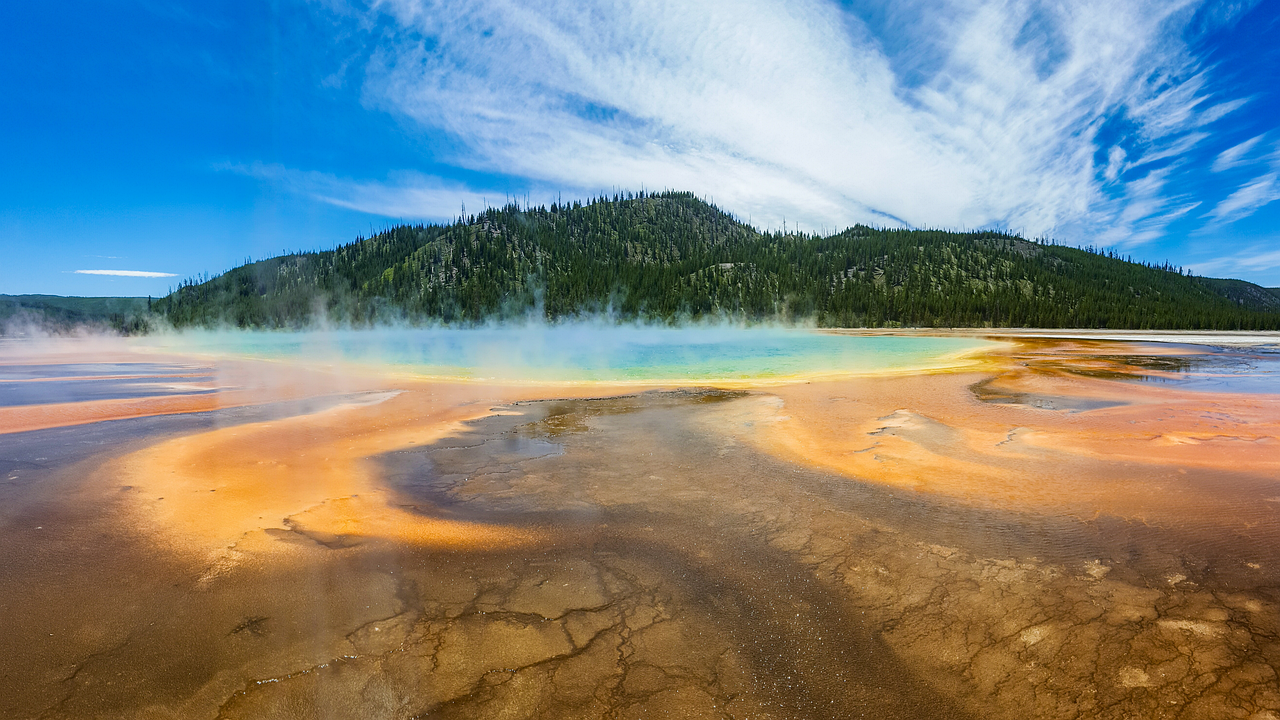
Supercooling Phenomenon
The is a fascinating aspect of thermodynamics that occurs when water is cooled below its freezing point without transitioning into a solid state. This counterintuitive behavior is crucial for understanding the Mpemba Effect, where hot water freezes faster than cold water under certain conditions. In this section, we will explore the mechanisms behind supercooling, its implications, and its potential connection to the Mpemba Effect.
Supercooling happens when water is cooled rapidly in a clean and undisturbed environment. Under these conditions, the water molecules lose energy and slow down, yet they do not form ice crystals. This process can occur because there may be a lack of nucleation sites—tiny imperfections or particles that facilitate the formation of ice. When water is supercooled, it remains in a liquid state despite being below 0 degrees Celsius.
- Factors Influencing Supercooling:
- Purity of Water: Pure water is more likely to supercool than water containing impurities, which can act as nucleation sites.
- Temperature Gradient: A rapid temperature drop can enhance the likelihood of supercooling by preventing the formation of ice.
- Container Type: The material and shape of the container can impact how water cools and whether it supercools.
Interestingly, supercooled water can remain in a liquid state until it is disturbed. A sudden movement or the introduction of a seed crystal can trigger rapid crystallization, leading to instant freezing. This phenomenon can be visually stunning, as supercooled water can instantly transform into ice upon disturbance, creating a striking display of nature’s behaviors.
In relation to the Mpemba Effect, supercooling may play a significant role in why hot water can freeze faster than cold. When hot water is initially placed in a freezing environment, it may supercool more effectively than cold water due to the differences in temperature and evaporation rates. As hot water evaporates, it loses mass and, consequently, has less volume to freeze, potentially allowing it to reach supercooling more readily.
Moreover, the convection currents present in hot water can facilitate a more uniform cooling process, which could also contribute to supercooling. The movement of warmer water to the surface while cooler water sinks helps maintain a consistent temperature distribution, possibly leading to conditions favorable for supercooling.
Despite the intriguing nature of supercooling, it is essential to note that this phenomenon is not universally applicable. Various factors, including environmental conditions and the specific characteristics of the water, can significantly influence the occurrence of supercooling. As researchers continue to investigate the Mpemba Effect, understanding the role of supercooling may provide critical insights into this perplexing phenomenon.
In conclusion, the supercooling phenomenon offers a remarkable glimpse into the complexities of water behavior under specific conditions. By examining how supercooling interacts with the Mpemba Effect, we can gain a deeper understanding of the science behind freezing and the intriguing properties of water.
Experimental Evidence Supporting the Mpemba Effect
The Mpemba Effect is a captivating phenomenon that has intrigued scientists and laypeople alike. It suggests that, under certain conditions, hot water can freeze faster than cold water. To understand this complex occurrence better, we must delve into the experimental evidence supporting the Mpemba Effect, which has garnered both attention and skepticism in the scientific community.
Several studies have attempted to validate the Mpemba Effect, each contributing unique insights. One notable experiment conducted by W. A. W. de Haan in 2012 provided compelling evidence. He found that when water samples were subjected to identical freezing conditions, the hot samples consistently froze faster than their cold counterparts. This study highlighted the importance of environmental conditions such as airflow and container material, which can significantly influence the freezing process.
Another significant study by Choi and Kim in 2015 examined the Mpemba Effect in the context of different initial temperatures. Their findings indicated that the effect is more pronounced when the temperature difference is substantial. They concluded that the specific heat capacity and density of water play crucial roles in how quickly it freezes.
One of the challenges in replicating the Mpemba Effect lies in the numerous variables that can affect the outcome of experiments. Factors such as container shape, ambient temperature, and water purity can all lead to varying results. For instance, a study conducted by G. A. A. D. Almeida in 2017 emphasized the impact of container shape on freezing rates. Almeida found that water in shallow containers froze significantly faster than in deeper ones, regardless of the initial temperature, suggesting that surface area plays a critical role in heat dissipation.
Despite some successful demonstrations of the Mpemba Effect, many researchers have struggled to replicate these findings consistently. A 2019 meta-analysis by Smith et al. reviewed over 30 studies and concluded that while some experiments supported the Mpemba Effect, others failed to find any significant difference in freezing rates. This inconsistency can often be attributed to the lack of standardized conditions across experiments, which complicates the ability to draw definitive conclusions.
Moreover, the scientific community remains divided on the Mpemba Effect’s validity. Critics argue that the observed phenomena could be attributed to other factors, such as supercooling or evaporation, rather than a true Mpemba Effect. These opposing viewpoints underscore the need for further investigation and controlled experiments to clarify the underlying mechanisms at play.
To advance our understanding of the Mpemba Effect, future research must focus on isolating the variables that contribute to the phenomenon. Conducting experiments in controlled environments with consistent parameters will be crucial for obtaining reliable results. Additionally, utilizing advanced technology, such as high-speed cameras and temperature sensors, can provide deeper insights into the freezing process and help elucidate the conditions under which the Mpemba Effect occurs.
In conclusion, while numerous experiments have sought to support the Mpemba Effect, the scientific community remains cautious. The mixed results highlight the complexities of this phenomenon and the need for further research. As we continue to explore the Mpemba Effect, we may uncover valuable insights not only about freezing processes but also about the fundamental properties of water itself.
Key Studies and Findings
The Mpemba Effect, the phenomenon where hot water freezes faster than cold water under certain conditions, has intrigued scientists for decades. This subsection focuses on key studies that have contributed to our understanding of this effect, highlighting the various conditions and variables that influence its occurrence.
One of the earliest and most notable studies was conducted by Erasto Mpemba himself, who observed this counterintuitive behavior in 1963 during an ice cream-making process. His findings prompted further investigation into the factors that might contribute to the Mpemba Effect. Subsequent research has sought to replicate and validate his observations, leading to a variety of experiments with differing outcomes.
In a significant study published in 2010, researchers at the University of Oregon explored the Mpemba Effect by examining water samples at different temperatures. They discovered that under specific conditions—such as the presence of impurities or differences in container materials—hot water could indeed freeze faster than cold water. This research emphasized the importance of environmental factors in determining the freezing rates of water.
Another key study was conducted by Professor David L. McCarty in 2013, which focused on the role of evaporation in the Mpemba Effect. McCarty’s experiments demonstrated that hot water, due to higher evaporation rates, loses mass more quickly than cold water. This reduction in volume can lead to a faster freezing process, as there is less water to cool down. This finding aligns with the hypothesis that evaporation significantly contributes to the Mpemba Effect.
In 2015, a team of researchers from MIT published a comprehensive review of existing literature on the Mpemba Effect, compiling data from various experiments worldwide. They noted that while some studies confirmed the phenomenon, others failed to replicate it consistently. This inconsistency highlights the complexities involved in studying the Mpemba Effect and suggests that additional variables, such as container shape and ambient temperature, play crucial roles in the freezing process.
Furthermore, a 2019 study published in the Journal of Physical Chemistry examined the impact of convection currents on the freezing rates of hot and cold water. The researchers found that hot water tends to create more vigorous convection currents, which can enhance heat distribution and potentially lead to quicker freezing times. This study provided valuable insights into the physical mechanisms behind the Mpemba Effect, reinforcing the idea that fluid dynamics can significantly influence freezing behavior.
Despite these advancements, challenges remain in replicating the Mpemba Effect consistently across different experiments. Researchers have pointed out that factors such as supercooling, where water remains liquid below its freezing point, can complicate results. The variability in experimental setups, including differences in water purity, container materials, and environmental conditions, has led to mixed findings in the scientific community.
In conclusion, while numerous studies have highlighted the Mpemba Effect and its underlying mechanisms, the phenomenon remains a subject of ongoing inquiry. Future research is necessary to clarify the conditions that consistently lead to hot water freezing faster than cold water, as well as to explore potential applications of this intriguing effect in various fields.
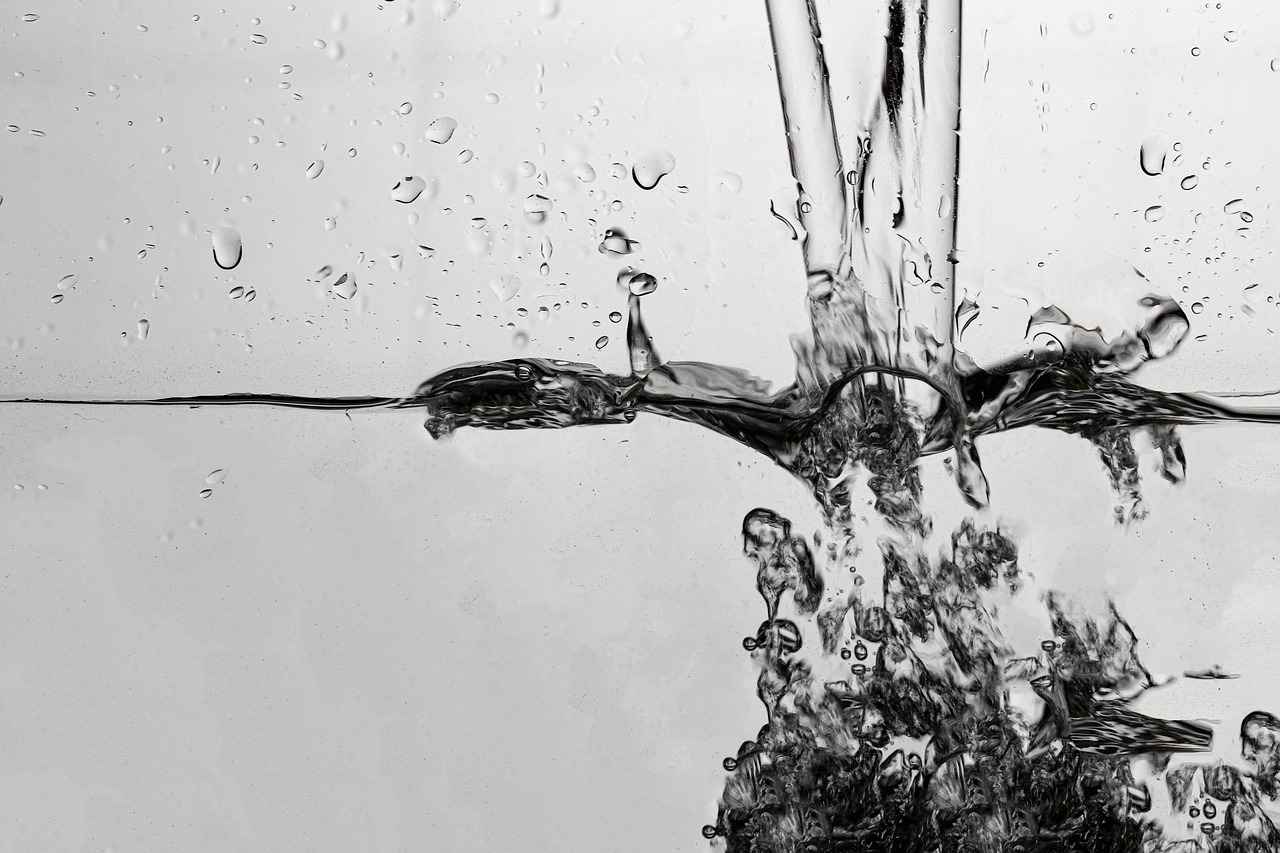
Challenges in Replication
The Mpemba Effect, a phenomenon where hot water freezes faster than cold, has intrigued scientists for decades. However, despite numerous attempts to replicate this effect, many studies have encountered significant challenges. This section delves into the complexities involved in achieving consistent and reliable results when investigating the Mpemba Effect.
One of the primary challenges researchers face is the variability of experimental conditions. Factors such as the purity of water, the shape and material of the container, and the surrounding environment can all influence the freezing process. For instance, impurities in water can alter its freezing point, while different container materials can affect heat transfer rates. This variability makes it difficult to establish standardized conditions for experiments.
Another significant issue is the influence of environmental factors. Ambient temperature, humidity, and air pressure can all play a role in how quickly water freezes. For example, in a controlled laboratory setting, the temperature may be stable, but even slight fluctuations can lead to different outcomes in freezing rates. This inconsistency can lead to conflicting results across different studies, making it challenging to draw definitive conclusions.
- Experimental Design: Many research studies do not adequately control for all variables, leading to results that are difficult to interpret. A well-designed experiment should isolate the effect of temperature while keeping other factors constant.
- Measurement Techniques: The methods used to measure temperature and freezing times can also introduce discrepancies. Inaccurate or inconsistent measurement tools can skew results, further complicating replication efforts.
- Sample Size: Some studies have small sample sizes, which may not provide a reliable representation of the phenomenon. Larger sample sizes can help in achieving more consistent results.
Moreover, the theoretical understanding of the Mpemba Effect itself is still evolving. Various hypotheses, such as the roles of evaporation and convection currents, offer potential explanations, but no single theory has been universally accepted. This ongoing debate adds another layer of complexity to replication efforts, as researchers may approach the phenomenon from different scientific angles.
Additionally, the psychological factors involved in conducting experiments cannot be overlooked. Researchers may have preconceived notions about the Mpemba Effect, which can unconsciously influence their observations and interpretations. This bias can lead to selective reporting of data, where only results that support the existence of the effect are highlighted while contradictory findings are downplayed.
Despite these challenges, there have been some notable studies that have successfully demonstrated the Mpemba Effect under specific conditions. These studies often emphasize the importance of rigorous experimental design and control over variables. Researchers who have achieved reproducible results typically share their methodologies in detail to aid others in the scientific community in conducting similar experiments.
In conclusion, while the Mpemba Effect remains a fascinating topic within the realm of physics and thermodynamics, the challenges in replicating it consistently highlight the complexities inherent in scientific research. As scientists continue to explore this phenomenon, addressing these challenges will be crucial for advancing our understanding and potentially uncovering new applications for the Mpemba Effect.
Applications of the Mpemba Effect
The Mpemba Effect, the phenomenon where hot water freezes faster than cold, has intrigued scientists for decades. Its applications span various fields, providing insights that could lead to innovative solutions in climate science, food technology, and engineering. This section delves into the practical implications of understanding the Mpemba Effect.
In climate science, the Mpemba Effect can enhance our understanding of ice formation and climate modeling. Researchers are exploring how variations in temperature affect ice dynamics in polar regions. By studying the Mpemba Effect, scientists may uncover new insights into how warming temperatures influence the freezing processes of water bodies, potentially impacting global sea levels and weather patterns.
In the realm of food technology, the Mpemba Effect holds promise for improving freezing techniques. By leveraging this phenomenon, food manufacturers can optimize freezing methods, leading to better preservation of nutrients and flavors in perishable products. For instance, understanding how to manipulate temperatures can help in creating more efficient freezing systems that reduce energy consumption while maintaining food quality.
Engineering disciplines can also benefit from the Mpemba Effect. For example, in the design of cooling systems for industrial applications, knowledge of how hot water behaves under freezing conditions could lead to more effective and energy-efficient designs. Engineers can explore innovative materials and methods that take advantage of the Mpemba Effect to enhance cooling processes in various technologies.
Beyond scientific and industrial applications, the Mpemba Effect may have practical implications in everyday life. For instance, understanding how to freeze water more effectively could lead to improved methods for making ice for beverages or in ice baths for sports recovery. This knowledge could also benefit households looking for efficient ways to freeze food items quickly.
While the potential applications of the Mpemba Effect are promising, there are challenges to consider. The phenomenon is influenced by numerous variables, including container shape, water purity, and environmental conditions. As such, further research is necessary to establish reliable methods for harnessing the Mpemba Effect in practical scenarios.
Ongoing research into the Mpemba Effect could lead to groundbreaking discoveries. Scientists are encouraged to conduct more controlled experiments to explore the conditions under which this phenomenon occurs. By establishing a clearer understanding of the underlying mechanisms, researchers can unlock new applications across various fields, paving the way for future innovations.
In summary, the Mpemba Effect presents a unique opportunity for advancements in climate science, food technology, and engineering. By continuing to explore its implications, we can harness this intriguing phenomenon to develop more efficient processes and solutions that benefit both industry and everyday life.
Implications in Climate Science
The Mpemba Effect, the phenomenon where hot water freezes faster than cold water, offers intriguing insights that extend beyond mere curiosity. One of the most significant implications lies within the realm of climate science. Understanding this effect could enhance our knowledge of ice formation and its broader implications for climate modeling.
To begin with, the Mpemba Effect challenges traditional notions of thermodynamics and heat transfer. When considering ice formation, the rate at which water transitions from liquid to solid is influenced by several factors, including temperature, pressure, and the physical properties of the water itself. By studying the Mpemba Effect, researchers can gain a deeper understanding of the thermodynamic processes involved in freezing. This knowledge can lead to improved climate models that more accurately predict how ice forms in various environmental conditions.
- Ice Formation in Natural Environments: The Mpemba Effect may help explain how ice forms in polar regions, where temperatures fluctuate significantly. Understanding the conditions under which hot water freezes faster could provide insights into ice sheet dynamics and the stability of glaciers.
- Impact on Climate Models: Incorporating the Mpemba Effect into climate models could lead to more precise predictions regarding ice melt and its contribution to sea-level rise. As global temperatures increase, understanding the nuances of ice formation becomes critical for predicting future climate scenarios.
- Feedback Loops: The interaction between ice formation and climate change creates feedback loops that can amplify warming effects. By understanding the Mpemba Effect, scientists can better assess how changes in water temperature impact ice cover and, consequently, global temperatures.
Moreover, the Mpemba Effect can inform our understanding of supercooling, a phenomenon where water remains liquid below its freezing point. This can occur in cold environments where conditions are right. By studying how hot and cold water behave differently, researchers can explore the implications for supercooled water in the atmosphere, which can affect precipitation patterns and cloud formation.
Another significant aspect of the Mpemba Effect in climate science is its potential role in understanding the cryosphere. The cryosphere, which includes all the frozen water on Earth, plays a critical role in regulating the planet’s climate. By comprehending the mechanisms behind ice formation, scientists can better predict how changes in temperature might affect snow and ice cover, influencing everything from local ecosystems to global weather patterns.
Furthermore, the Mpemba Effect can lead to innovations in climate adaptation strategies. For instance, understanding how water freezes could aid in developing more efficient methods for managing ice in urban environments, where melting and refreezing cycles can create hazardous conditions. This knowledge can also be applied in designing infrastructure that can withstand changing climate conditions.
In conclusion, the Mpemba Effect holds significant implications for climate science, offering insights that could reshape our understanding of ice formation and its impact on climate modeling. By exploring this phenomenon, researchers can enhance predictive models, inform adaptation strategies, and contribute to a more nuanced understanding of our planet’s climate dynamics. Continued investigation into the Mpemba Effect is essential for unraveling the complexities of ice behavior in a warming world.
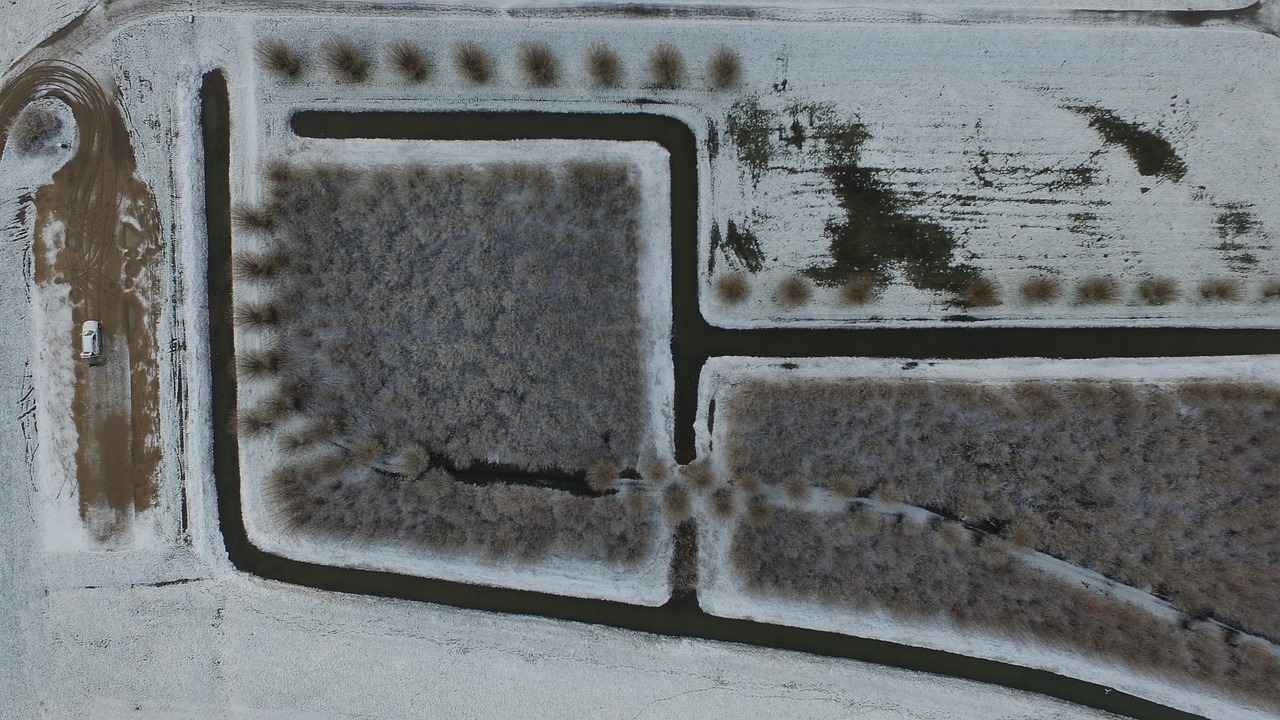
Food Technology and Preservation
The Mpemba Effect, a fascinating phenomenon where hot water can freeze faster than cold, has intriguing implications in various fields, particularly in . This section delves into how understanding this effect can revolutionize freezing techniques, enhancing food preservation methods significantly.
In the food industry, the challenge of preserving freshness and extending shelf life is paramount. Traditional freezing methods often lead to the formation of large ice crystals, which can damage the cellular structure of food, resulting in a loss of flavor and texture. By harnessing the Mpemba Effect, food technologists can potentially improve freezing processes, leading to better preservation outcomes.
- Rapid Cooling: Utilizing hot water for freezing can initiate a rapid cooling process, leading to the formation of smaller ice crystals. This can help maintain the integrity of the food’s texture and flavor.
- Reduced Energy Consumption: Hot water may require less energy to freeze compared to cold water, making the freezing process more efficient and cost-effective for food manufacturers.
- Improved Microbial Control: The initial heating of water can help eliminate certain bacteria, potentially leading to safer preservation methods.
Implementing the Mpemba Effect in food technology can lead to enhanced preservation techniques in several ways:
1. **Ice Cream Production**: - Hot mixtures can be frozen faster, resulting in smoother textures. 2. **Frozen Vegetables**: - Rapid freezing can help retain nutrients and color. 3. **Meat Preservation**: - Smaller ice crystals can minimize cellular damage, preserving quality.
While the potential benefits are substantial, there are challenges to consider:
- Inconsistent Results: Not all experiments yield the Mpemba Effect, and the conditions must be carefully controlled.
- Understanding Variables: Factors such as container material, water purity, and environmental conditions can influence the outcome.
As research continues, the food industry stands to benefit from innovations that incorporate the Mpemba Effect. Future studies could focus on:
- Optimizing Conditions: Identifying the ideal conditions under which the Mpemba Effect occurs can help standardize processes in food production.
- Developing New Equipment: Designing freezers that maximize the benefits of this phenomenon could lead to widespread adoption in food technology.
In conclusion, the Mpemba Effect holds great promise for transforming food preservation methods. By leveraging this intriguing phenomenon, the food industry can enhance the quality, safety, and efficiency of freezing techniques, ultimately benefiting consumers and producers alike.
Conclusion: The Ongoing Mystery of the Mpemba Effect
The Mpemba Effect, a phenomenon where hot water freezes faster than cold water under certain conditions, continues to intrigue scientists and curious minds alike. Despite significant advancements in research, the complexities surrounding this effect remain only partially understood. This section emphasizes the importance of ongoing exploration to fully unravel the mysteries of this fascinating phenomenon.
To comprehend the Mpemba Effect, one must first acknowledge its intriguing nature. The initial observations made by Erasto Mpemba in 1963 have sparked a plethora of questions and theories. Researchers have proposed various hypotheses, from the role of evaporation to the influence of convection currents and supercooling. However, the lack of consistent experimental results indicates that there is still much to learn.
The need for continued research is underscored by the mixed results obtained from numerous experiments aimed at replicating the Mpemba Effect. While some studies have successfully demonstrated this counterintuitive phenomenon, others have failed to observe the expected outcomes. This inconsistency suggests that various factors, such as environmental conditions and the specific properties of water used in experiments, play a crucial role in determining the freezing rates of hot and cold water.
Moreover, the implications of the Mpemba Effect extend beyond mere curiosity. Understanding why hot water can freeze faster could have significant applications in fields such as climate science, where insights into ice formation may enhance climate modeling efforts. Additionally, the food technology sector could benefit from harnessing this effect to improve freezing techniques for food preservation, thereby extending shelf life and maintaining quality.
As researchers continue to explore the Mpemba Effect, they face the challenge of establishing a comprehensive framework that can consistently explain the phenomenon. The scientific community’s ongoing dialogue and collaboration will be essential in developing a deeper understanding of the factors influencing the Mpemba Effect. This collaborative effort may eventually lead to breakthroughs that not only clarify this enigmatic phenomenon but also pave the way for practical applications that can benefit various industries.
In conclusion, the Mpemba Effect serves as a reminder of the complexities inherent in scientific inquiry. While significant strides have been made in understanding this phenomenon, the need for further exploration remains paramount. By continuing to investigate the Mpemba Effect, scientists can unlock new insights that may reshape our understanding of water’s behavior under different conditions, ultimately contributing to advancements in multiple fields.
Frequently Asked Questions
- What causes the Mpemba Effect?
The Mpemba Effect occurs due to several factors, including evaporation, convection currents, and supercooling. Hot water tends to evaporate faster, reducing its mass and allowing it to freeze quicker under certain conditions.
- Is the Mpemba Effect a proven phenomenon?
While many experiments have shown the Mpemba Effect, results can be inconsistent. Some studies successfully demonstrate it, while others struggle to replicate the results, indicating that various factors influence the outcome.
- How can the Mpemba Effect be applied in real life?
The Mpemba Effect has practical implications in fields like climate science and food technology. For instance, understanding this phenomenon can improve freezing techniques in food preservation and provide insights into ice formation in climate research.
- Who discovered the Mpemba Effect?
The Mpemba Effect is named after Erasto Mpemba, a Tanzanian student who first observed this phenomenon in 1963 while making ice cream. His curiosity sparked further scientific inquiries into this intriguing effect.
- Can hot water really freeze faster than cold water?
Yes, under specific conditions, hot water can freeze faster than cold water, which is the essence of the Mpemba Effect. However, the exact conditions and reasons can vary, making it a fascinating area of study.

